Movie Review By: SFAM
Year: 2005
Directed by: James Bai
Written by: James Bai
IMDB Reference
Degree of Cyberpunk Visuals: Low
Correlation to Cyberpunk Themes: High
Key Cast Members:
- Puzzlehead/Walter: Stephen Galaida
- Julia: Robbie Shapiro

Overview: First let me give a great big THANK YOU to Puzzlehead Director, James Bai, who gave me a copy of this movie to review, even though it has not yet been released for general distribution (Indie filmmakers - take note! Feel free to send me your cyberpunk films to review prior to release!  ). In looking at the movie poster and in hearing from others, I just HAD to get a copy of this to watch. Puzzlehead is about as far as you can get from a Hollywood production. You won’t see fast-paced action sequences here (quite the contrary – the movie is very slow paced), nor will you get futuristic scenery, or high-end FX. But make no mistake – even though the cyberpunk visuals are sparse, this is DEFINITELY a cyberpunk movie. The themes introduced and the fractured sense of humanity are fully cyberpunk. ). In looking at the movie poster and in hearing from others, I just HAD to get a copy of this to watch. Puzzlehead is about as far as you can get from a Hollywood production. You won’t see fast-paced action sequences here (quite the contrary – the movie is very slow paced), nor will you get futuristic scenery, or high-end FX. But make no mistake – even though the cyberpunk visuals are sparse, this is DEFINITELY a cyberpunk movie. The themes introduced and the fractured sense of humanity are fully cyberpunk.

The Setting: Puzzlehead takes place in a futuristic dystopia, where all modern technology has been destroyed. Government still exists, but has devoted all resources for medical services. Unfortunately, the movie doesn’t give us enough intro as to why this occurs – the introductory narrative does mention that anti-federalists and the luddites forced the closure of all biomechanical laboratories (apparently they got rid of all “regular” technology in the cities as well), and that now, most resources are devoted to repopulation of the species. We can infer that the significant lack of people and an extreme reaction against technology coupled with at least a semblance of government might be due to some sort of genetic experiment gone awry.
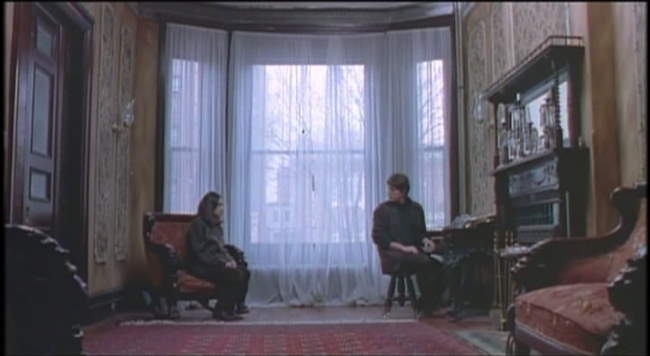
The majority of the movie takes place in a Victorian style townhouse, completely devoid of modern technology. Other sets include a decrepit, failing local grocery story, and a run-down apartment. Most external settings are comprised of run-down industrial areas. While the movie itself takes place in the future, aside for a few technology shots, the audience has to rely on the narrative and suspension of disbelief for this to work.
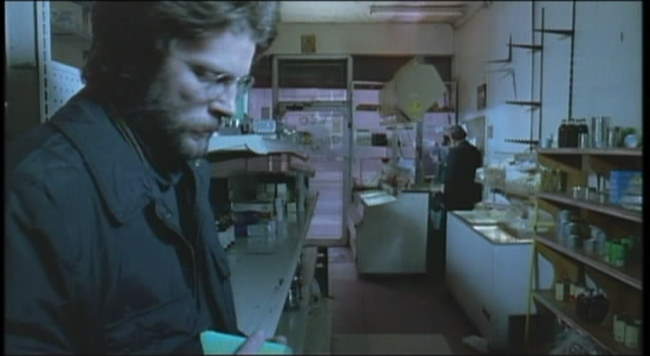
The Story: Humanity, it seems, is a shadow of its former self – random violence amongst is the norm, and virtually everyone we see in Puzzlehead is emotionally fractured. What little remains of the beleaguered populace is either making their way by becoming completely self-sufficient or by leaching off of others. It is in this setting that we focus on Walter – an emotionally fractured scientist who has trouble even walking out his front door. Unfortunately for Walter, he is in love with the very reclusive, local grocery store attendant, Julia (wonderfully played by Robbie Shapiro), but has never gained the courage to even attempt talking with her.
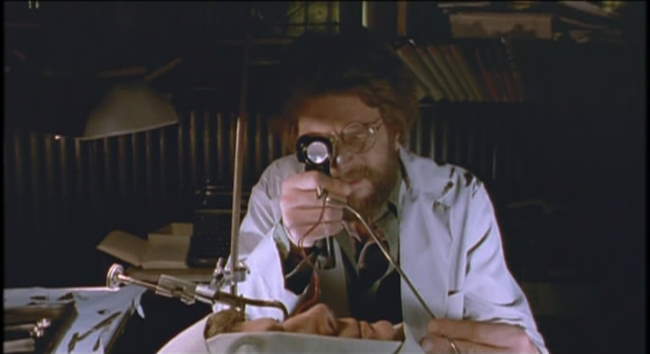
Walter (played by Stephen Galaida) decides to create an android named Puzzlehead (also played by Stephen Galaida) completely in his own image, apparently to serve as his external persona to interact in a world he prefers to avoid, and also to hopefully prompt interaction with Julia. After creating Puzzlehead, Walter spends significant time instructing Puzzlehead how to act. Walter is very derogatory controlling in his training of Puzzlehead. While Walter creates Puzzlehead with sentience, he severely restricts Puzzlehead’s behaviors. Over time, it becomes apparent to Puzzlehead that Walter has created and is using Puzzlehead for his own selfish purposes. In effect, Puzzlehead realizes that Walter sees him as nothing more than property. After Walter allows Puzzlehead to start venturing forth into society, he eventually comes into contact with Julia. Things get interesting when Walter follows up on Puzzlehead’s initial encounter with Julia.
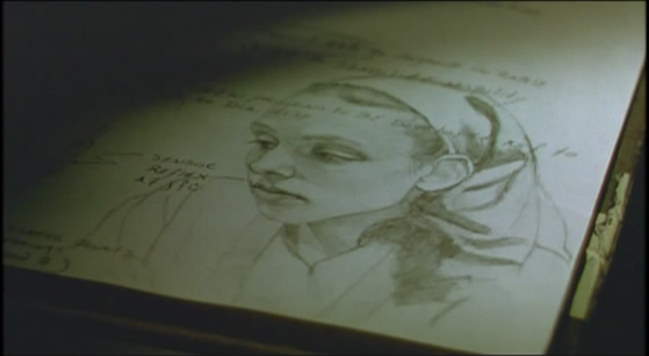
Puzzlehead Works Better on Second Viewing: Puzzlehead is told in narration format by the android, Puzzlehead, long after these events have taken place. In total, this approach works pretty well. Although, it does have the added side-effect of making the movie work better upon second viewing. There are a number of apparently throw-away comments that the narrator (Puzzlehead) gives that the audience simply can’t process until they’ve seen the story. However, upon second viewing, this adds a context to the movie that is missing the first time through.
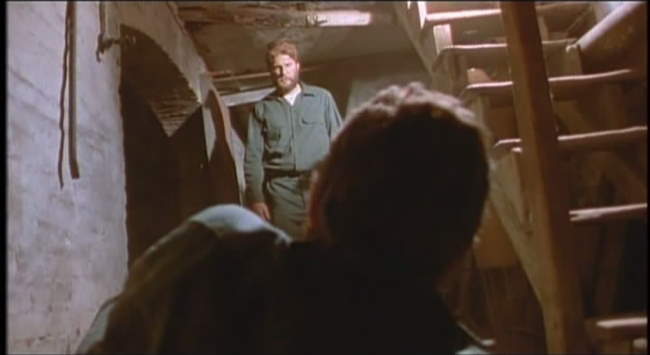
The Cinematography: Because the pacing in Puzzlehead is very slow, it runs the risk of inducing audience boredom. Luckily, this is largely overcome by the continually excellent shot selections throughout. It’s clear that significant thought went in to camera angles and interesting lighting approaches. Continually, we are treated to shots with extreme close-up foreground elements with action and movement occurring in the background. This approach, along with many low angle shots contributes to the sense of alienation the narrative provides.
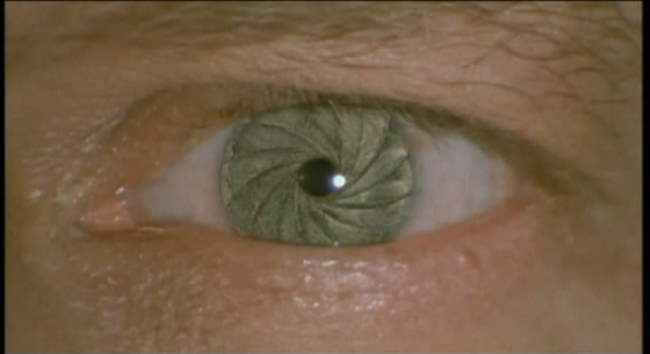
How does an Android Develop “true” Freewill? Puzzlehead provides us with a very interesting take on the development of android sentience and self-awareness. Puzzlehead is created using a neuron-scan from his creator’s brain (Walter), and thus, has all of his memories (yet, most are rendered meaningless without the context) – unfortunately, this scan has also left Puzzlehead riddled with Walter’s flaws. Puzzlehead’s biomechanical brain, like a human’s brain, is structured and controlled by belief structures and associative memories. Emotions, which are already troubling and confusing for Puzzlehead, develop into uncontrollable deviant behaviors.
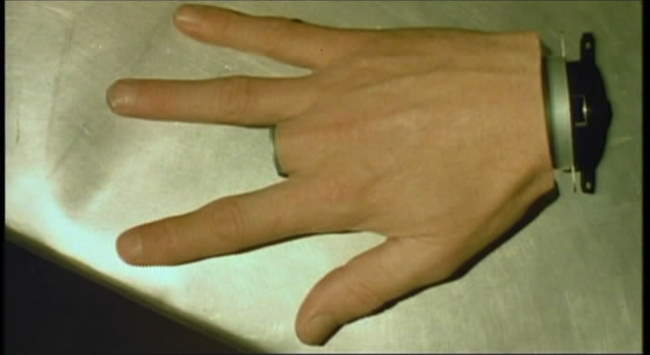
As Puzzlehead begins to develop self-awareness and freewill, he notices these tendencies that control him. These behaviors impact Puzzlehead’s ability to act the way the “real” him wants to act. His android brain, a combination of (undefined) biomechanical parts, is similar to a human’s in that he can recognize when he is doing deviant behavior, but cannot change his actions. But unlike humans, because Puzzlehead is an android, he can consider options for reprogramming his initial operating conditions. One question Puzzlehead ultimately poses is this – do androids have the possibility of becoming “exactly” the type of sentient being they want to become?
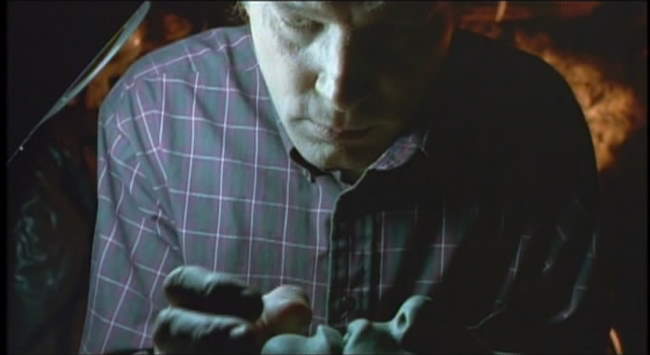
This potential ability to be “perfect” in the sense of transforming into exactly what Puzzlehead wants to become serves to reinforce Asimov’s notion that sentient robots would consider themselves superior to humans. In Puzzlehead, we get a realistic glimpse of how this might look.

Puzzlehead is an Intensely Personal Film: In judging this movie strictly on what I could learn from watching it I give it 7 stars (I would give it 7.5 if I had half stars – something I’m still working on). As a bonus, in talking with the film maker, it turns out that the film itself is an intensely personal metaphor of James Bai’s – one that you would never guess but makes perfect sense once you are told of it. Watching it with this knowledge, the complexity of the movie itself ramps up significantly, as does its accomplishment as a film – so much so that I’m strongly inclined to add another star to the review. I won’t give this part away, but instead offer Mr. Bai the opportunity to comment here if he would like to describe Puzzlehead’s personal nature in his own words.
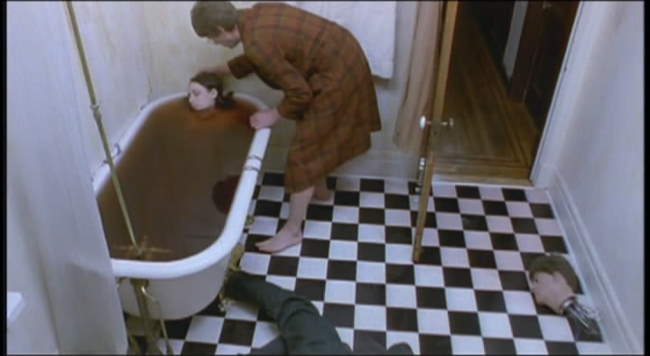
The Bottom Line: James Bai has created a very low-budget flick that’s definitely worth a watch. While I had some problems with the acting in some of the early scenes (Galaida as Puzzlehead acts way too human at the beginning, but eventually settles into the role), and a few of the visuals which seemed too 70s looking, these are diminished as the movie progresses. Bai poses some interesting thoughts on android development – some of which are unique to movies. If you can stand a very slow-paced, intellectual cyberpunk flick without a lot of cyberpunk visuals (although I LOVE the bathroom and broken arm scenes), Puzzlehead is definitely worth a watch.
~See movies similar to this one~
Movie Review By: SFAM
Year: 2002
Directed by: Gary Fleder
Written by: Philip K. Dick (story), Scott Rosenberg (Adaptation), Caroline Case et a. (screenplay)
IMDB Reference
Degree of Cyberpunk Visuals: Medium
Correlation to Cyberpunk Themes: Medium
Key Cast Members:
Spencer Olham: Gary Sinise
Hathaway: Vincent D’Onofrio
Maya Olham: Madeleine Stowe
Cale: Mekhi Phifer
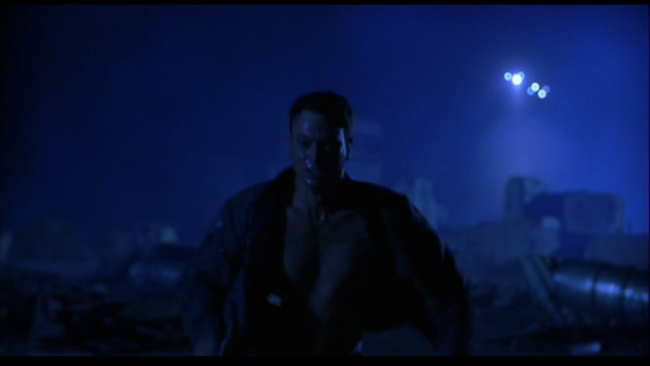
Overview: Impostor got bashed by critics for having bizarre cut always, too many slow motion scenes, and generally weird and herky-jerky cinematography decisions. Additionally, others criticize it due to originally being a 30-40 minute short that got extended into a full-length movie. While all true, I truly like both the story (basically the Fugitive, done in a near future setting) and the acting, especially by Gary Sinise and Madeleine Stowe. While the cinematography is definitely subpar in this Philip K. Dick story, the movie itself is still worth a watch.
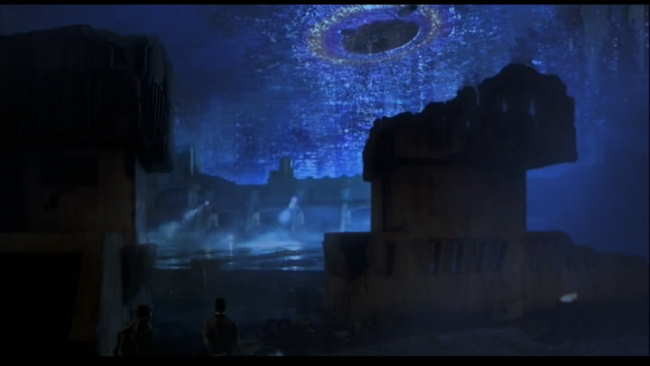
The Story: Impostor is set in the year 2079, a time when a race of aliens are attempting to invade the earth. To protect the population, humans now live in high-tech “bubbles” which seem to be able to keep out Alien weapon systems. Because of this, the aliens have resorted to creating DNA-based replicants, not unlike those in Battlestar Gallactica, by a process which apparently involves copying captured humans. These replicants are in actuality very powerful bombs, but have no self-awareness of being replicants – when their “trigger” is invoked (such as being in close proximity to their target), they explode.
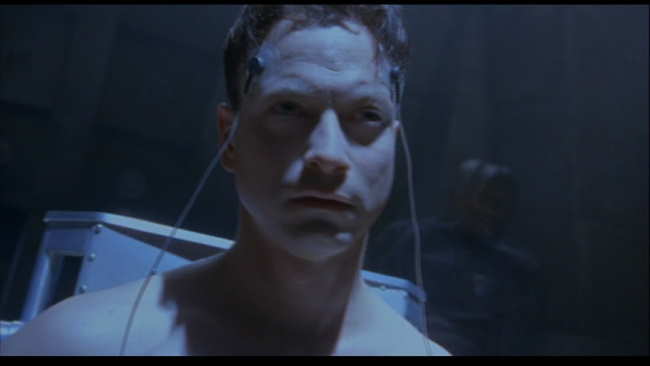
Sinise plays Spencer Olham, a weapons scientist who has been accused of being replaced by a replicant (called a cyborg in the movie). The security head (Vincent D’Onofrio) captures him and threatens to rip out his heart in order to prove that he’s not a human. Sinise escapes and then engages on a journey to prove his innocence. Olham determines that he can prove his innocence by equipment at the hospital where his wife (Madeleine Stowe) works, that compares a previous body scan with his current body. Unfortunately, he’s already gotten out of the city, and now needs to figure out how to get past security to return.
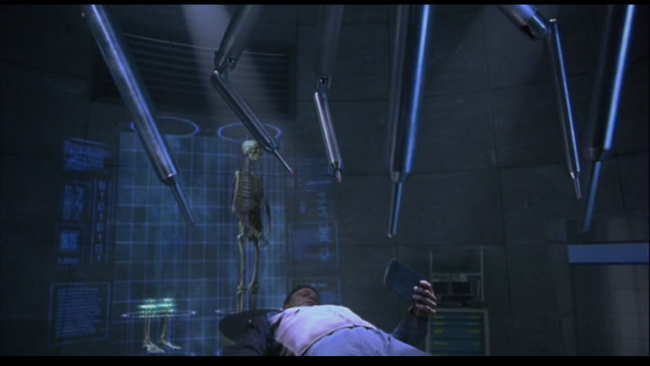
How Do You Know You’re You? This, in essence is the question Impostor is asking when it’s not in chase-filler mode. Is Spencer Olham a human caught in a horrid mistake, or is he a cyborg comprised of human-like bio-matter that is in actuality a powerful bomb sent by aliens to infiltrate Earth’s defenses in order to kill human leadership? If you were a cyborg-replicant imbued with the memories of the original host, how could you figure it out? Imposter briefly mentions the notion that the cyborgs don’t have a soul, but this is never pursued. One wishes they had come up with some way of quantifying a soul. But in the end, we are left to answer this question ourselves.
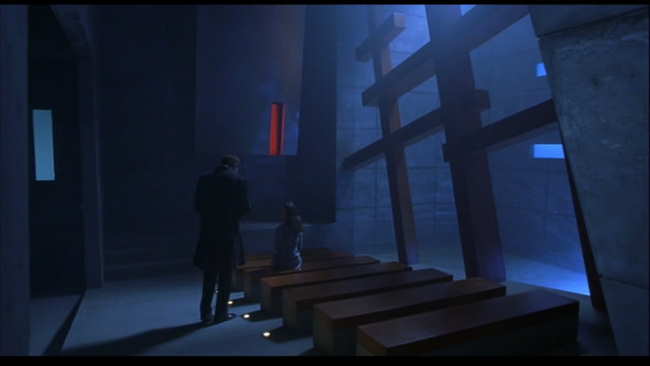
The Middle “Chase” scenes are Filler: Originally, Impostor was shot as a 30-40 minute movie short that was intended to be part of a larger collection. Apparently, Miramax liked the short enough (or cooled to the short collection idea) that they wanted it extended into a full length feature film. However, in doing so, they were left with a relatively tight beginning and tight end, and then a vast chasm of nothingness in the middle. By and large, the middle is filled with semi-pointless chase scenes that are sprinkled with people that aren’t germane to the central plot. Now we get a whole underground dystopia thing added to the mix, whereby it turns out that the nice hospital is ONLY for those who live in the bubble, while those in the outer area get little or no medicine and support. In its better moments, the middle part of the movie seems to want to emulate a “Fugitive” type feeling, but this doesn’t always work well. The DVD also includes the original movie short which is definitely worth a watch.
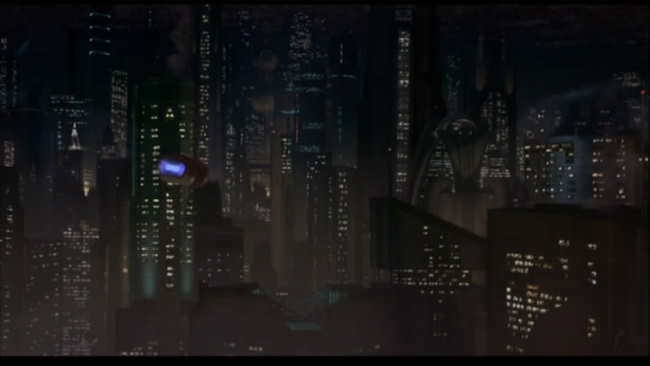
The Visuals: Impostor’s vision of the future is terrific in some places and haphazard in others. The cityscape scenes look right out of blade runner, the bubble city coverings, torture look great, but the majority of Imposter involves treks through regular looking tunnels. The torture equipment and medial imagine equipment are both more than passable. Imposter is strongly dominated by blue tones, which pervade most every aspect, from the chase scenes to the interrogation scenes.
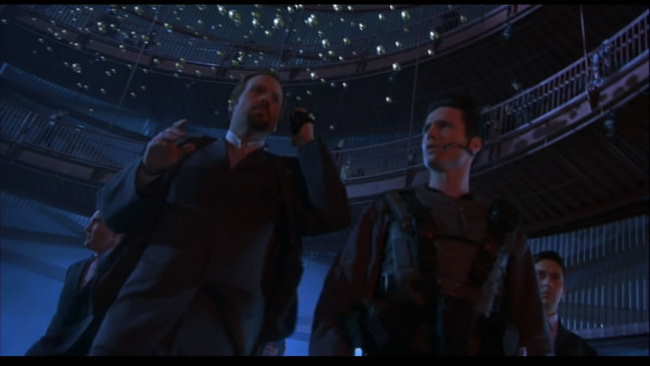
The Acting: By far, the best aspect of Impostor is the acting.Gary Sinise in particular really sells his role well, but Madeleine Stowe and Vincent D’Onofrio also give high quality performances, and Mekhi Phifer is at least passable. With slightly worse performances, Imposter could have easily ended up in the cheesy “B” Movie bin. The effects are uneven enough (some looked great, others looked TV-ish) that solid acting was a must to keep this movie watchable.
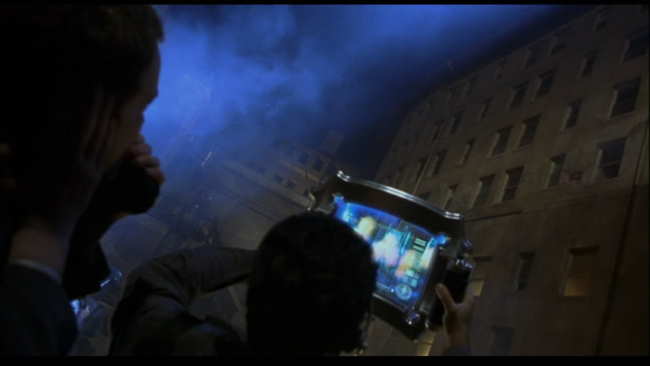
The Editing: Impostor is rightly criticized for crazy and continuous cut-shots. Rare is the shot that lasts more than 4 to 5 seconds before cutting to another view. The goal was to add to the tension of the chase scene, but the editors went overboard. Especially when combined with some strange shot angles, Imposter almost takes on an experimental vibe, as if they weren’t sure what would work, so they tried various different things.
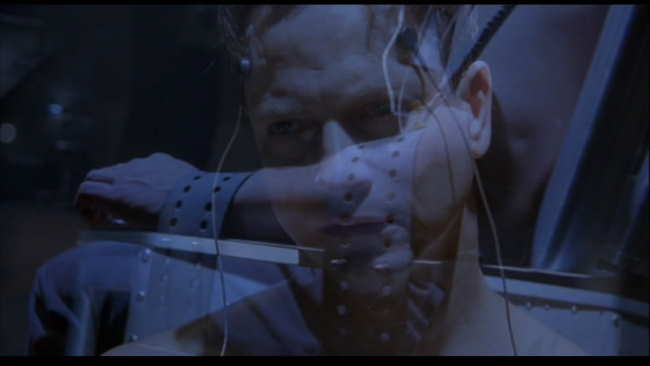
The Bottom Line: While this “Fugitive-like” movie has lots of interesting scenes, it’s the ending that I really like - definitely a cool twist. The acting is solid and the visuals are sometimes, but not always, pretty decent. There are lots of pointless tunnel-running that easily could have been cut by 15-20 minutes, and also, there are enough questions and plot holes that stop Imposter from being a great movie. Still, the question of determining humanity is an interesting one, and is well executed.
~See movies similar to this one~
Movie Review By: SFAM
Year: 1989
Directed by: Masato Harada, Adam Smithee
Written by: Jim Bannon, Masato Harada, Adam Smithee
IMDB Reference
Degree of Cyberpunk Visuals: Medium
Correlation to Cyberpunk Themes: Low
Key Cast Members:
Brooklyn: Masahiro Takashima
Texas Air Ranger Sgt. Nim: Brenda Bakke
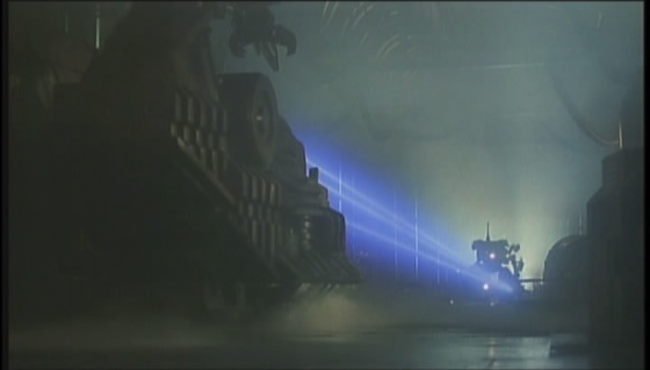
Overview: Gunhed is a Japanese live-action Mecha-Transformers movie done up in low-budget, gritty cyberpunk style. Unfortunately, it gives us a set of almost irreconcilable issues. On the one hand, the low-budget robots are pretty cool, as are a number of other low-budget FX. Yet, these are packaged in a barrage of incoherent plot points and truly strange sound decisions (the Japanese actors speak Japanese while the American actors speak English). When you see “Adam Smithee” in the director’s spot, you know something has gone wrong – in this case, the answer is clearly the editing. Gunhed may qualify for the worst editing of all time.
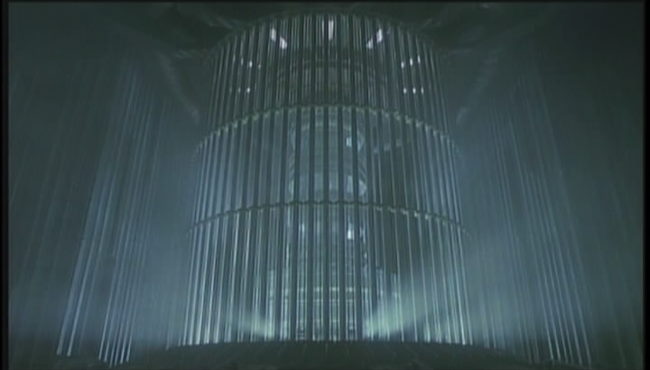
The Story: A Robot War ensued an a small robot production island in the Pacific in the year 2025, where sentient supercomputer, Kyron 5, has decided that Mankind was irrelevant. A mecha battalion of Gunhed warriors – huge transformer style tanks – were dispatched to eliminate Kryon 5. They didn’t succeed, but Kyron 5 was essentially marginalized, so no more force was sent. Now, 13 years later, due to a depletion of world resources, the key component that creates supercomputers, Texmexium (I shit you not – this is the name!), is in short supply, as are spare microchips. A group of scavengers have decided to enter the “forbidden zone” and go to the Island in the hopes of collecting Gunhed chips, which are now worth more than gold.
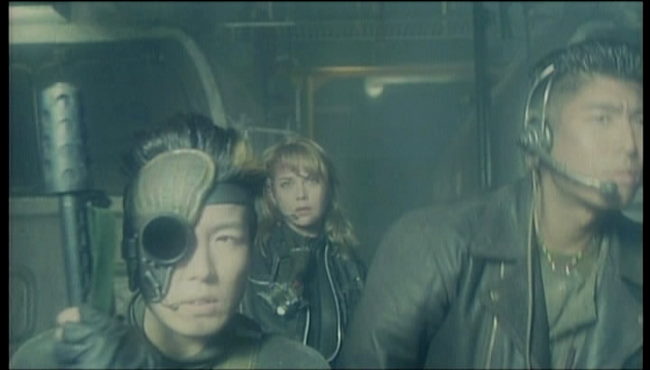
When the get to the Island, they quickly learn that Kyron 5’s protections are degraded but still seem in place. At first Kyron 5 doesn’t recognize their presence (you’d think it would notice a plane landing, but I guess not – nor do we find out why they didn’t just bomb the Island from the air back in 2025). But quickly it’s defenses, headed up by a fly-eyed looking “bio-droid” come to challenge the scavengers. Along the way, the find the remnants of a Texas Air Ranger helicopter, which still has a passenger, Sergeant Nim (Brenda Bakke). As things progress, most of the scavengers die in gruesome ways, until only Sergeant Nim and a mechanic named Brooklyn (Masahiro Takashima) survive – but due to the Island’s defenses, they are stuck there unless they can destroy Kyron 5. Also, they have stolen the Kryon 5’s supply of Texmexium (perhaps this is constructed from stale tacos), and now the Biodroid wants them back.
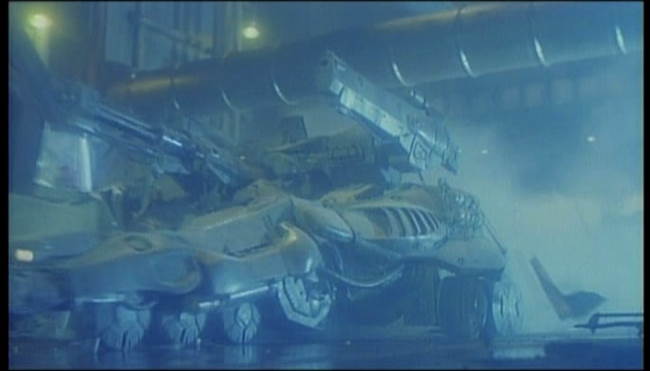
But that’s not all! Apparently some kids live on this Island (where they came from, we have NO idea), and they’ve decided to help Brooklyn and Sergeant destroy Kyron 5. But wait – there’s more! It turns out that one of the Gunhead tanks from 2025 appears salvageable, so Brooklyn attempts to revive Gunhed while Sergeant Nim goes off to do something unspecified (but at least it looks important). An incoherent sequence of actions ensues, whereby Brooklyn tries to bring the Gunhed to destroy Kyron 5. As he gets close, their biggest challenge awaits – Kyron 5 has resurrected a Gunhed of his own!
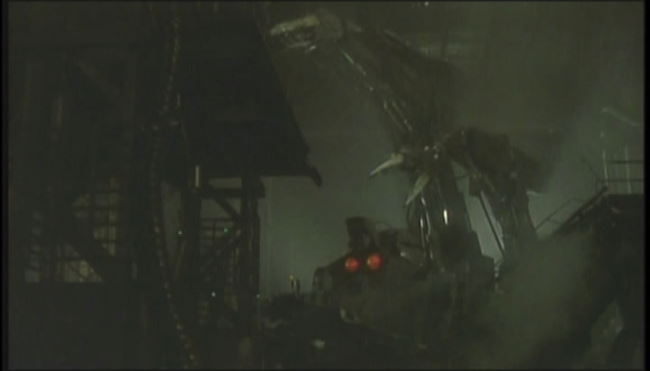
The Editing: Gunhed could have potentially been a decent, low budget movie, but the editing kills it. Continually, we see random actors popping out in places that don’t make sense, and whole streams sequences are rendered incoherent based on completely haphazard editing choices. I’m going out on a limb and guessing that at some point, the script was relatively simple and straightforward, but due to the editing, Gunhed was transformed into an absolute mess. But perhaps this is just the English version - does anyone know if the Japanese version is different?
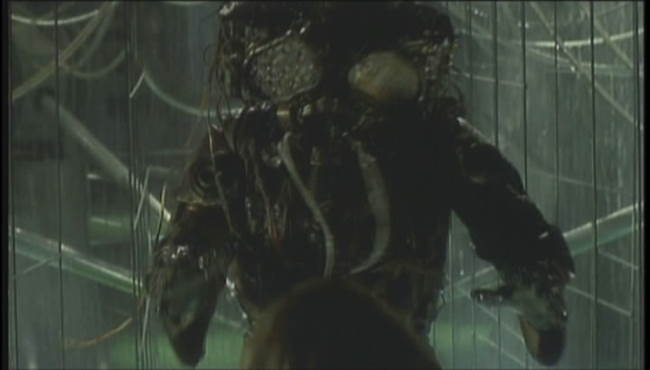
The FX: Yes, the effects are all low-budget, and yes, it appears as if the entire movie takes place in a small factory, where the same locations are used over and over again only with different camera angles, and no, the tanks really don’t have any flexible movement. Still, even with the problems and all Gunhed has some enjoyable shots. The biodroid is pretty low quality, but the factory looked realistic enough, and every now and then, you get some cool, low budget effects. The Mecha-transformer fight is especially fun. .
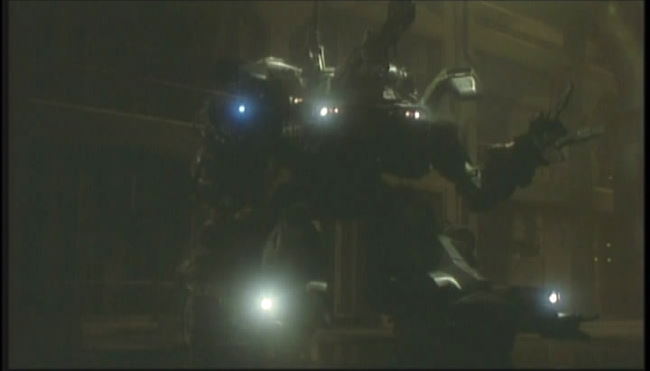
The Bottom Line: The fact that the actors speak different languages but apparently understand each other perfectly really describes the state of Gunhed – it’s interesting but never seems to hang together well. Most egregious is the Biodroid, which has swallowed one of the scavengers whole, and now has to deal with someone inside itself stopping it from killing the rest of the people (the hows and whys of this are never explained). The appearance of the kids pretty much destroy all possibility of a believable story. On the other hand, we get Brenda Bakke doing her best sultry Lauren Bacall impression, which works somewhat well. Unfortunately, her partner, Masahiro Takashima isn’t up to taking a leading role. Watch this for the Mecha fight if you like, but the movie as a whole just doesn’t work.
~See movies similar to this one~
Movie Review By: SFAM
Year: 1989
Directed by: Vanio Amici
Written by: Vanio Amici & Piero Regnoli
IMDB Reference
Degree of Cyberpunk Visuals: Very Low
Correlation to Cyberpunk Themes: Low
Key Cast Members:
James: Gabriele Gori

Overview: Bronx Executioner is yet another example of a movie where they spent more on the completely unrelated cover art than they did the entire production. Truly, looking at that, and in reading the cool description, you’d think this is might be a pretty decent low-budget cyberpunk flick. Here’s the description:
Android gangs battle humans and Robotic Replicants in the New York City of the near future. The sector sheriff must join forces with a gigantic, yet unpredictable Replicant in order to save the city…
Now, for what you actually get:
- Absolutely NO replicant or robot visuals
- NO dystopic New York. This was clearly filmed in the Italian equivalent of the outskirts of Los Angeles. The terrain is dry, and boring - no dystopic city here folks.
- a truly horrid Master-student sheriff coming of age story, that in the end is completely pointless
- Robots that supposedly have no emotion but still enjoy raping humans. I guess their parts work.
- a low quality body builder who can’t act to save his life who tells us he’s a robot replicant (we have to believe him as NONE of the replicants look like anything but humans)
- Lots and lots and lots of low quality gun fights between biker looking dudes (but we’re told half of them are robots). Road Warriors this isn’t!
The Bottom Line: The story pretty much sums this movie up: It’s about a body builder replicant who falls in love with a human (even though he doesn’t have the capability to fall in love) who gets raped by really mean replicants, so the body builder replicant asks the junior cop to help him get even with the meanie replicants. Sound stupid? Bingo! It’s pretty bad. And unfortunately, it’s not so bad that it’s good. The gratuitous breast shots just can’t save this turkey. It’s just bad, K?
~See movies similar to this one~
Movie Review By: SFAM
Year: 1981
Directed by: Gerald Potterton, Jimmy T. Murakami
Written by: Len Blum et al.
IMDB Reference
Degree of Cyberpunk Visuals: Medium
Correlation to Cyberpunk Themes: Low

Overview: Heavy Metal represents one of my great teenage film memories. Back in the day, before the porn repository known as the internet was formed, Heavy Metal was edgy stuff. As a young teen, Heavy Metal was everything a kid my age wanted to see – sex, drugs, rock-n-roll, violence, defiance of authority, and hot chicks! Add the most awesome hard rock soundtrack, and Heavy Metal became the drug of choice for young folk back then. That it was animated somehow made it alright with the parents. Make no mistake – Heavy Metal is not high brow fare, nor is it particularly well made. But it is definitely a very fun guilty pleasure.
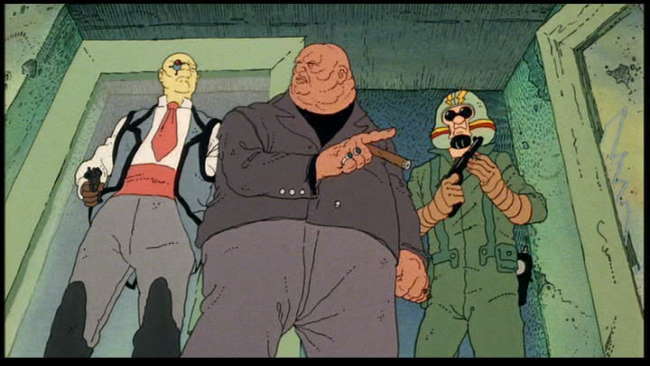
The Story: Heavy Metal is a series of somewhat interrelated vignettes about the journey that ultimate evil makes, this time in form of an evil sentient green orb, called the Loch-Nar. The Loch-Nar captures a little girl in present times for reasons unknown till the end, and shows her a series of stories about how the Orb has corrupted people of all races in all times and places.
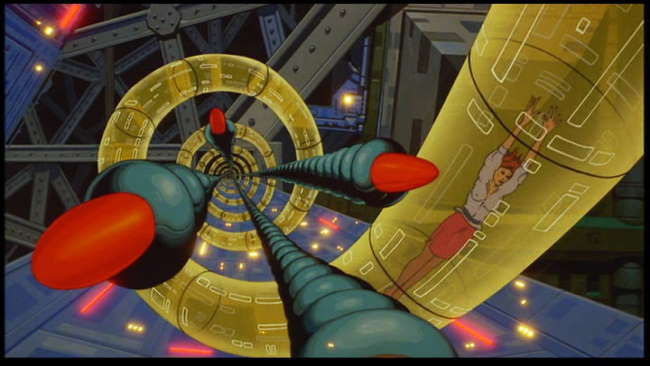
In each story segment, we get a strange, otherwordly setting in which the orb enters, corrupts and then leaves. Often a hero stops the orb from fully corrupting everything, but always the orb leaves a stain. The atmosphere is one of interrupting and ongoing scene with something truly unusual that occurs. But it’s the ending vignette, Taarna which is the best, and also the one that finally gives us insight into why the Loch-Nar has captured this little girl. Taarna isn’t really cyberpunk in any way but a few of the visuals, but it is a lot of fun.
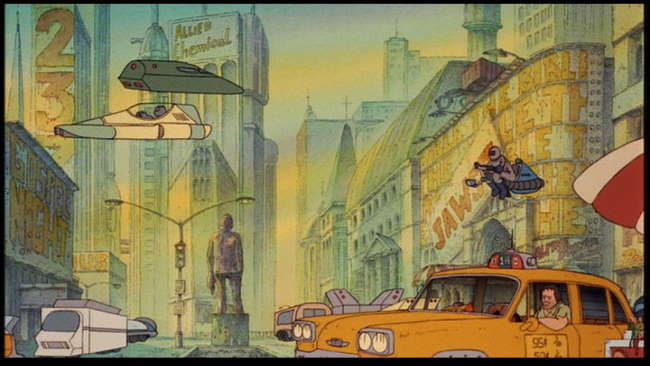
Is it cyberpunk? Clearly, some of the vignettes, many in fact, are more fantasy than cyberpunk. So why do I have this movie listed? While some of the vignettes do have the cyberpunk feel, most clearly Harry Canyon, Heavy Metal absolutely belongs here due to its magazine roots. Both William Gibson and Ridley Scott credit visuals in the Heavy Metal Magazine is very influential for helping create their settings. Most cited is the Moebuis illustrated “The Long Tomorrow” comic. As you can see by the link, the Long tomorrow gives us a gritty neo-noir, near future comic that’s edgy, dangerous, and lots of fun. And more importantly, the atmosphere – the mood in Heavy Metal throughout seems pretty cyberpunk.
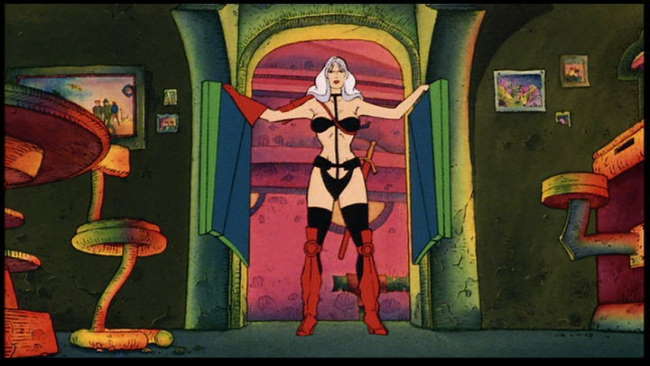
Heavy Metal is Male Fantasy Material: Heavy Metal is NOT sophisticated - far from it in fact. Heavy Metal caters to the sophomoric, prepubescent male, and emphasizes gratuitous nudity, hot chicks kicking butt, nerds who grow massive bodies and get laid, android-hot chick sex, etc. Heavy Metal falls right in line with the old “Gonad the Barbarian” style books, so in this way, it really isn’t cyberpunk. Cyberpunk as a sub-genre dramatically improved the quality and intelligence of what we found on the scifi-fantasy shelves. Heavy Metal the movie does not, although many of the stories do provoke an interesting thought or two.
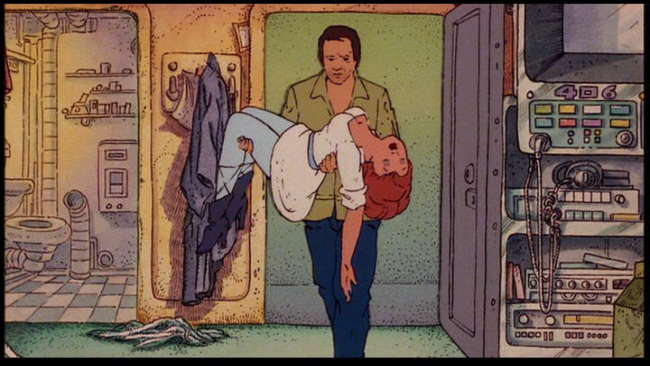
The Animation: Each story segment is written and animated by completely different teams, although some of the voice actors such as John Candy appear in many episodes. Some of the segments seem pretty simple, whereas others have more than decent texture. All in all, Heavy Metal represents a mixed bag, but at the time, it truly was on the revolutionary side. While French director René Laloux’s most awesome animated movies were far better, outside of them, few things touched Heavy Metal. The fact that Heavy Metal included the themes and visuals teens were looking for back then transformed it into the ultimate cult rebellion flick.
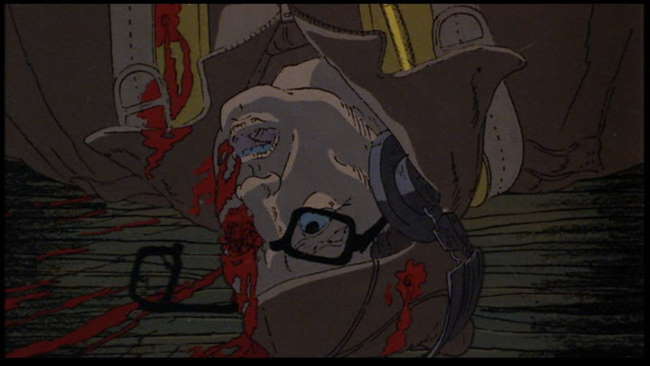
The Sound Track: Heavy Metal still should be considered among the best sound tracks for a movie. It SOOO added to the atmosphere. We get a heaping dose of great hard rock from the likes of Blue Oyster Cult, Black Sabbath, Sammy Hagar, Cheap Trick, and Don Felder’s most awesome rendition of Heavy Metal (Takin’ A Ride). In addition, we get great little 80s tunes like Devo’s “Working in a Coal Mine,” Journey’s “Open Arms,” and Stevie Nicks’ “Blue Lamp.” Truly, if you’re interested in experiencing 80s counter-culture at its fantasized finest, Heavy Metal is the movie to watch.
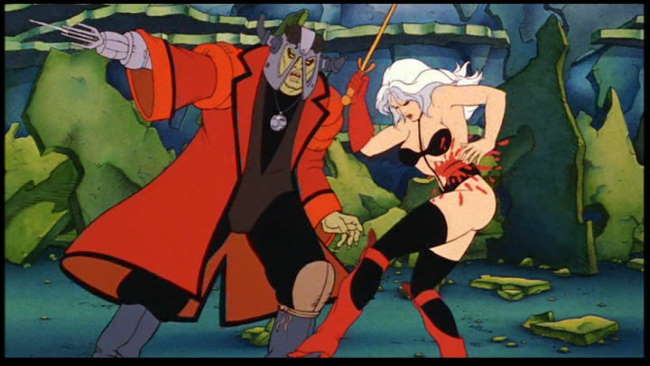
The Bottom Line: Heavy Metal is not a great movie, but it is a lot of fun. While it has a few vignettes that are clearly cyberpunk in nature, the majority of the movie is unsophisticated SciFi-Fantasy. Still, the visuals and atmosphere are more than interesting, as are the diversity of animation styles. Heavy Metal should be seen more for the vision this film represents from the Magazine. This, as much as anything is responsible for the genre we now call cyberpunk.
~See movies similar to this one~
Movie Review By: SFAM
Year: 1999
Directed by: Chris Columbus
Written by: Isaac Asimov & Robert Silverberg (short story/Novel), Nicholas Kazan (Screenplay)
IMDB Reference
Degree of Cyberpunk Visuals: Low
Correlation to Cyberpunk Themes: Medium
Key Cast Members:
Andrew Martin: Robin Williams
Little Miss Amanda Martin/Portia Charney: Embeth Davidtz
‘Sir’ Richard Martin: Sam Neill
Rupert Burns: Oliver Platt
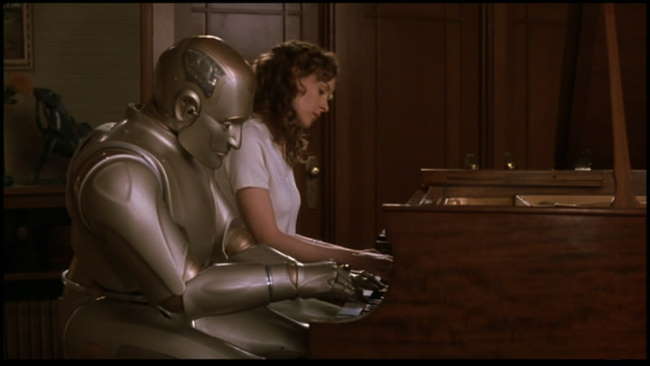
Overview: What a strange movie to try to categorize. Bicentennial Man seems like a Sci-Fi movie at times and a drama at others. In many ways, Bicentennial Man is hit or miss. Robin Williams and Embeth Davidtz are terrific, but the script itself really has trouble figuring out what movie this is going to be. Still, but there’s enough here to make it worth a viewing, as long as you don’t mind overly sappy movies.
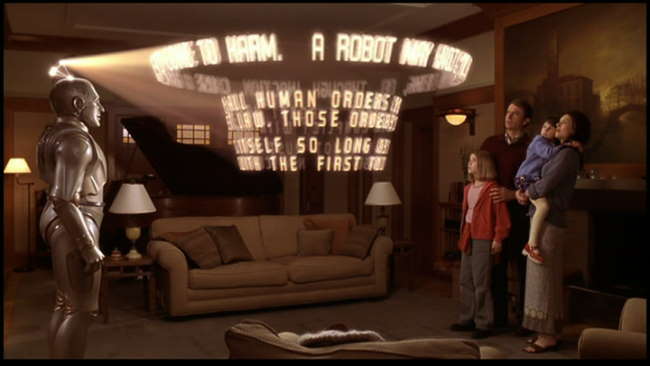
The Story: In the very recent past (2005 – but it was the near future in 1999), the Martin family has gotten a new appliance – a robot named Andrew. And while Andrew obeys the three laws of Robotics, and Andrew (Robin Williams) comes right out of the box with a sense of unexpected wonder. Andrew seems interested in all sorts of things that Robots aren’t normally interested in. In spending time with the youngest daughter, Little Miss (Embeth Davidtz), Andrew learns the meaning of love and humanity. Richard Martin, the father (Sam Neill) is intrigued by this and brings Andrew back to the corporation to talk about his “uniqueness.” The robotics maker is worried that this “bug” will ruin business and wants him terminated immediately. Luckily for Andrew, Richard likes his uniqueness, and decides to spend his time teaching Andrew everything a sentient person needs to know.
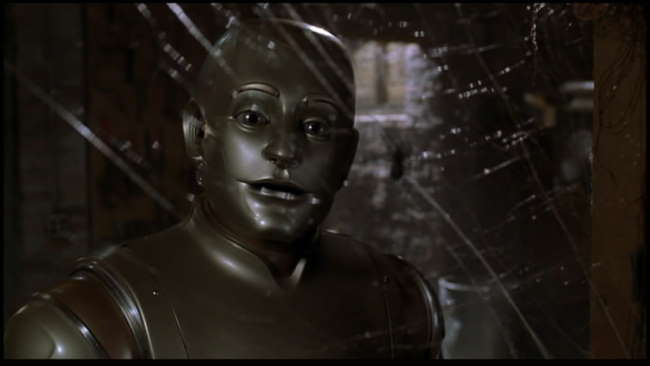
Andrew continues to grow and expand his capabilities and thinking. He becomes a master clock maker, and after working out the specifics of getting a bank account, makes millions in selling them. Time hurries on (well, not really – this part could have been edited somewhat) and Andrew’s family grows old and starts to die off. Andrew eventually asks and is granted his freedom, but still hangs around the family, especially Little Miss. He eventually goes in search of others like him, and then later finds ways of “upgrading” his appearance to become human-looking. It is at this point that he meets Little Miss’s grand daughter, Portia. He is captivated by her immediately, and begins to contemplate sharing the love with a human. But in order to do so, he decides he must be “declared” a human – this too will require change.
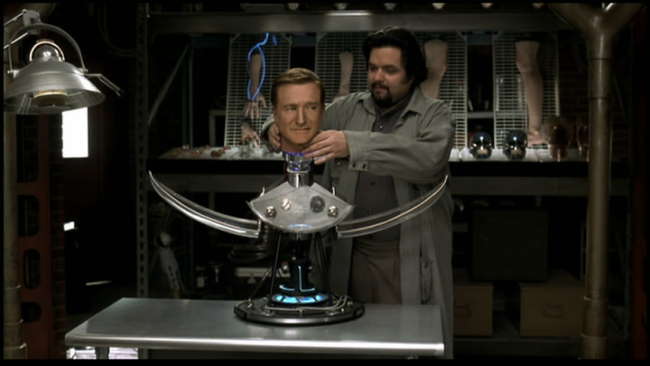
Is it cyberpunk? I was really torn about whether or not to include Bicentennial Man on this site. It clearly is not a cyberpunk movie in tone, in that the near future is closer to an idyllic situation than a dystopic one. We also don’t see a massive corporation controlling society. In fact, the story isn’t focused on society at all – it’s on an individual. So why include it in a cyberpunk site? Because of the post-human nature of the story Bicentennial Man presents us. Here we see an example of an android as a post-human versus a human transformed into a cyborg. The whole question of sentient androids and their quest for freedom and self-determination is raised and explored, although not to the extent I would have liked. In this Idyllic future, Androids are essentially still considered high-tech kitchen appliances. In its better moments, Bicentennial Man poses the question our society may face one day – when do we grant human rights to the products of our innovation? But again, I do fully appreciate that this move sits more in the gray area than it does as a cyberpunk flick.
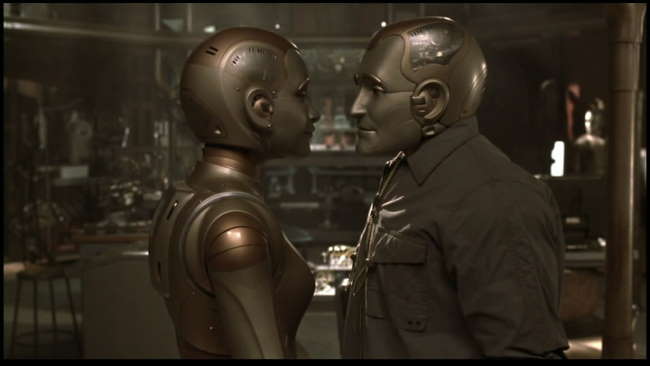
What defines humanity? One really wishes Bicentennial Man spent more time elaborating these questions instead of getting mired in a love story. While the love story was interesting and well done in an overly sappy sort of way, it is far less interesting than the question of what would make androids human. Here we have two androids – one clearly nothing more than a kitchen appliance, and the other something significantly more. Andrew has freewill, self-determination, is self-motivated, and clearly seems to “feel” love. Over time, he upgrades his body with the help of robotics tinkerer, Rupert Burns (Oliver Platt) so that he is human in virtually every way (can feel, have sex, etc.). In Bicentennial Man, Andrew pursues being declared “human” versus having human rights. Unfortunately, the movie glosses over how Andrew had the rights to maintain a bank account, own a house on the beach, or even a company. It’s clear that humanity encapsulates quite a few requirements – this movie focuses on our lack of immortality as a defining characteristic of humanity. While this may be true, it’s hardly complete. We are left with the idea that Andrew has all the other (unstated) traits but this one.
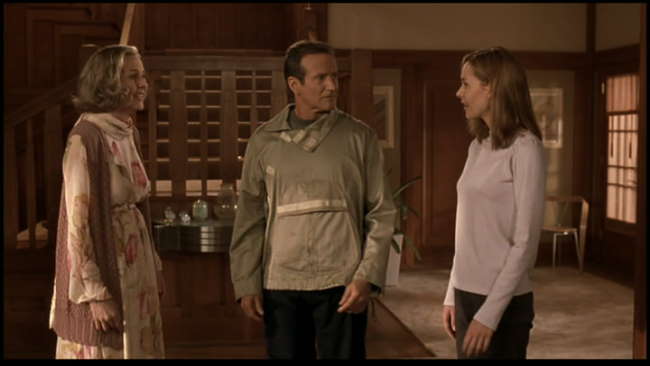
The Love Story: Bicentennial Man is a love story, and although it’s sappy, it’s still a complicated one. Andrew was really in love with Little Miss, but neither he nor her (who was also in love with him) were strong enough to admit it. Yet Andrew has another chance when her grand daughter, Portia, is an almost perfect image of Little Miss. Even then Andrew has trouble coming to terms with the possibilities. In the end, Andrew’s potential relationship with Portia represents his last step transforming to human.

The FX: While Andrew’s expressions are well done, clearly lots more could have been undertaken here. Every so often, we get glimpses of futuristic cityscapes, but unfortunately, these appear more tacked on than integrated. Throughout most of the story, which takes place over the course of 200 years, we see no interesting change in society. Literally, the technology doesn’t seem to affect life at all. This really is an almost unforgivable lack of thought and imagination. While there was scene after scene of little love and caring vignettes, futuristic visions were pretty much non-existent here – they could have easily been integrated.
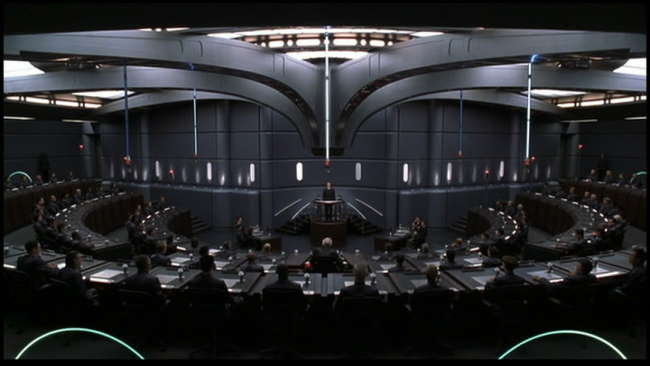
The Bottom Line: There is a number of problems with Bicentennial Man which detracts enjoyment. For starters, Andrew’s uniqueness is essentially magical, as no explanation is ever given. I would have hoped as Andrew became an inventor supreme of human and android cyborg parts, he would have spent time questioning his own existence and attempted to replicate it. Also, the length of time spent on Andrew with his family could probably have been edited down somewhat, and the time spent on the more interesting android questions and their effect on society could have been expanded. Still, there is enough here to make Bicentennial Man worth a watch. Williams and Davidtz have great chemistry and make the sappy love story work. And the questions posed are explored in at least enough detail to make you think.
~See movies similar to this one~
Movie Review By: SFAM
Year: 2001
Directed by: Steven Spielberg
Written by: Brian Aldiss, Ian Watson & Steven Spielberg
IMDB Reference
Degree of Cyberpunk Visuals: Very High
Correlation to Cyberpunk Themes: High
Key Cast Members:
David: Haley Joel Osment
Gigilo Joe: Jude Law
Monica Swinton: Frances O’Connor
Prof. Hobby, the Visionary: William Hurt
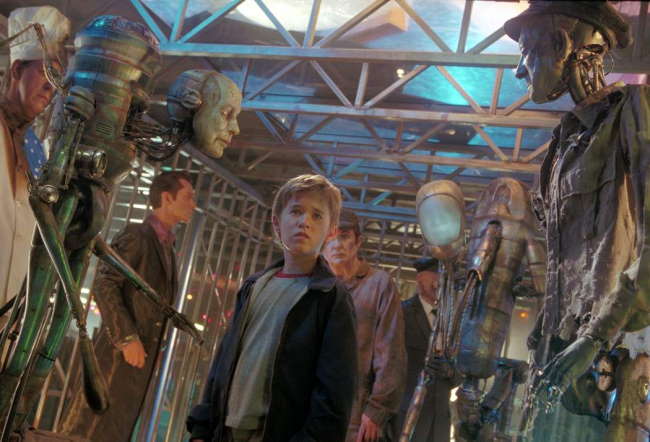
Overview: Originally convieved of by Stanley Kubrick, Spielberg took the reigns of this wonderful Pinocchio tale done in cyberpunk. This story is about a robot who wants to be a “real boy” so that his mother will really love him. Like Pinocchio, he goes on a journey of discovery. Although there are a few over-the-top scenes, the FX is awesome and the acting is wonderful. AI definitely inspires discussion if nothing else.
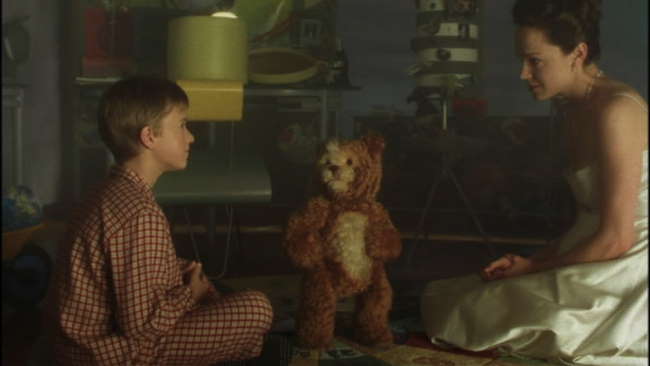
The Story: Set in a near future where global warming has led flooding of all the coasts, and a general breakdown has occurred in many parts of the world. Robots, called Mechas, are common in society now, and perform a variety of functions. Unfortunatley, there is widespread public outcry against their very existence. The focus is on a single family, where a mother has essentially lost her son, who now hangs on to life in cryogenic freeze. Her husband convinces her to get a new model mecha to replace their son – this one becomes hard-wired to its owner and experiences real love and emotion. After accepting their new mecha, a child named David, the family’s life seems complete – until their real son miraculously recovers from his illness.
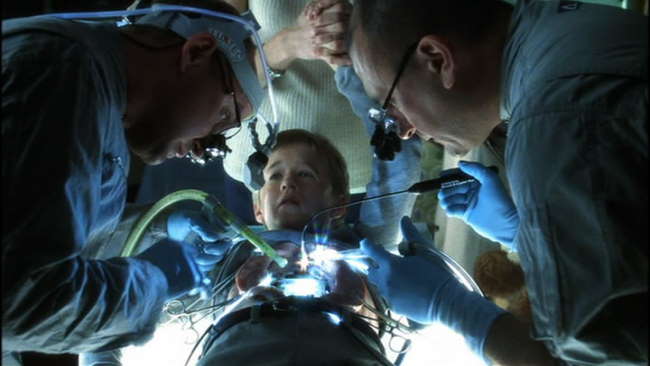
Their real son feels threatened by David, and after a sequence of incidents, David’s mother is forced to send David back to his maker for destruction. But while driving him to his death, she cannot bring herself to follow through, and instead sets him free. In a traumatic breakup, David’s mother warns him of the dangers of the outside world before leaving him alone with just his Teddy toy. David, having been read Pinocchio, decides that if he can find the Blue Fairy, he can convince her to turn him into a “real boy.” Along the way, he encounters Gigilo Joe, who helps him on his journey.
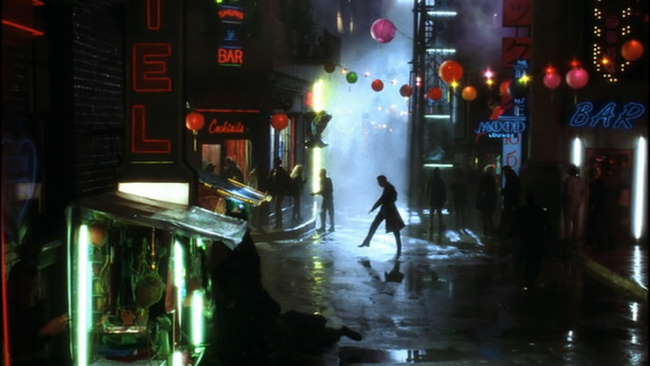
The Acting: The acting in AI is consistently terrific. Haley Joel Osment puts in a performance you’d never expect to see from an actor so young. He is utterly believable both as a mecha, and as his journey proceeds, seemingly transforms into a regular acting boy. Jude Law puts in a terrific performance as Gigilo Joe – one that almost transcends the movie itself as a memorable character. Frances O’Connor also delivers a fine performance as David’s mother, as does William Hurt as David’s inventor.
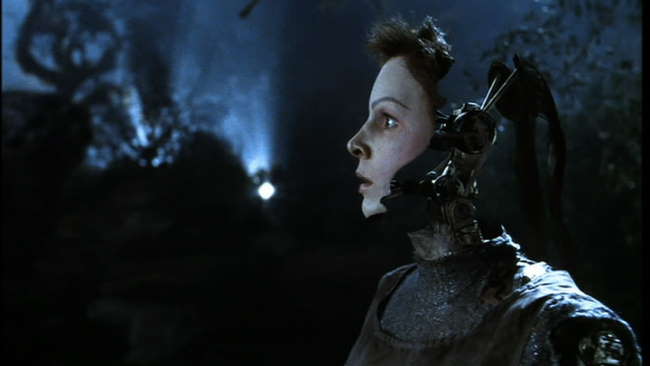
The FX: The visual effects in AI are still among the best that’s ever been put on film. The mechas (robots) look incredibly real – far more real than should be possible. There are many different kinds of mechas, many of which are represented here, but none are better than the Nanny. She is breathtaking. The entire front-end of the movie gives us a very normal set of surroundings. Other than the cars, and minor mecha parts, we aren’t dazzled by the upfront effects. This makes the second half all the more impressive. When David goes outside, things change dramatically. From the robots, to the city-scapes to the destroyed New York, this AI is a visual feast. To top it off, the Teddy Bear is maybe my favorite robot character of all movies.
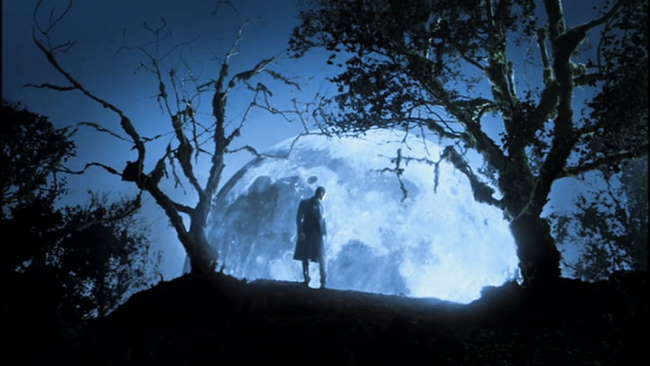
The Score: John Williams is as awesome as ever in creating the score for AI. He is able to capture the feeling of the dregs of humanity along with an almost heavenly sense of love and contentment. The score really brings the movie together in places that with something lessor it might not have worked.
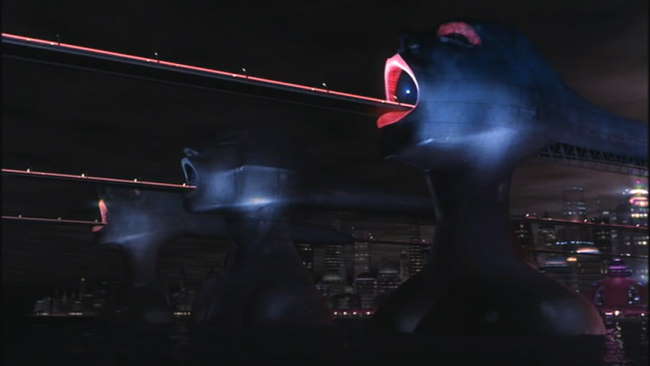
Kubrick versus Spielberg: AI is a strange movie in that it encapsulates a harsh Kubrick-style future while at the same time has a story that lends itself to Spielberg’s Capra-like tendency for the emotional mushiness. In watching AI, rarely do the two tendencies meet up well. We either have the dystopic craziness of the Flesh Fair or the serenity of the beginning. We also see dramatic changes in pacing. In some parts, we have a very slow, deliberate movie, whereas in others, it seemingly breezes past key scenes.
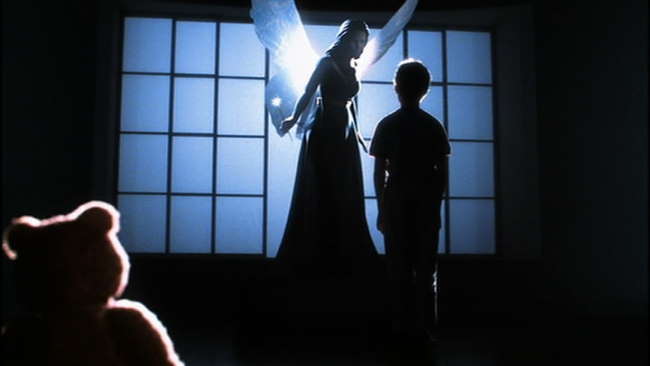
Some thoughts on the ending: Many folks who generally like the movie end up hating the ending. I don’t have this issue - in fact I like the ending, but I do understand the sentiment. The ending really does drop into a completely different movie altogether. In effect, it becomes the fairy tale that David pursues the entire movie. But because I KNOW the ending engenders discussion, I am concerned about spoilers in the comments below. PLEASE don’t post spoiler thoughts - if you do, your comment will be deleted. Instead, I’ve created a thread in the meatspace to discuss the ending of AI.
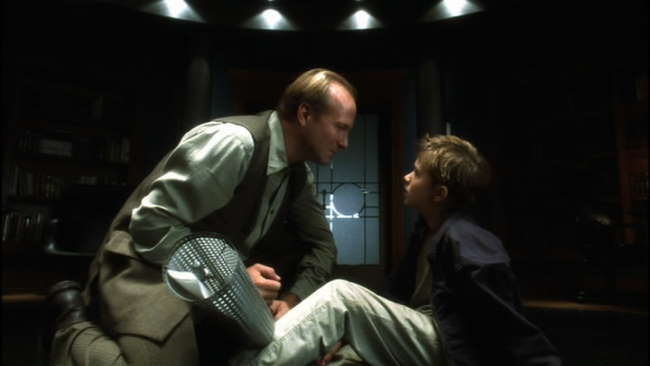
The Bottom Line: AI is a visual feast of dystopia and human morals run amok. As the same time, it’s a beautiful love story about the best of humanity. Many have issues with the ending, although, it works fine for me. While the actions in the Flesh Fair are bit outside believability, overall, the story is very well done. The CG is among the best ever on film (check out page 2 below if you want to see more screencaps). It doesn’t serve to astonish us, but instead, attempts to integrated seemlessly into the film. The acting is terrific, especially from Haley Joel Osment (David the robot boy) and Jude Law (Gigolo Joe). On top of this, we get a very interesting portrayal of a future with sentient robots who do not have any rights. One can almost see the Animatrix’s Rennaissance occurring shortly afterwards.
Go to AI, Page 2: More Screencaps –>>
~See movies similar to this one~
Movie Review By: SFAM
Year: 1982
Directed by: Aaron Lipstadt
Written by: Don Keith Opper, James & Will Reigle
IMDB Reference
Degree of Cyberpunk Visuals: Low
Correlation to Cyberpunk Themes: Medium
Key Cast Members:
Max 404: Don Keith Opper
Dr. Daniel: Klaus Kinski
Maggie: Brie Howard
Cassandra: Kendra Kirchner
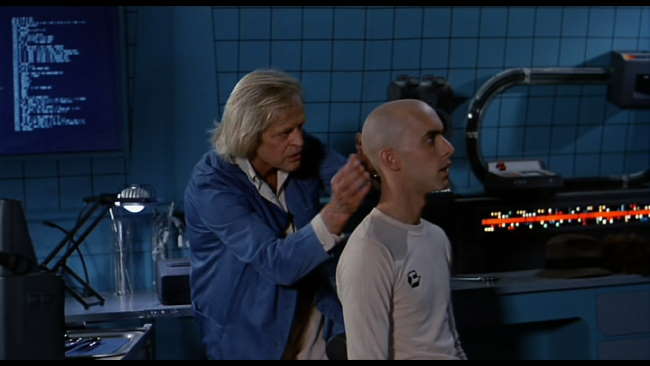
Overview: There are some really good Sci-Fi movies that I don’t consider strictly cyberpunk, but still are strong enough in some ways that I feel compelled to include here. Android is one of those films. Android, in a very low-budget manner, gives us a wonderful exploration of androids and their early attempts to assimilate with humankind. On top of this, the writing is interesting and the acting is very good, especially Klaus Kinski and Don Keith Opper. The budget is low enough that the FX and set designs actually do detract some from the enjoyment of the film, but not enough to stop you from seeing this.
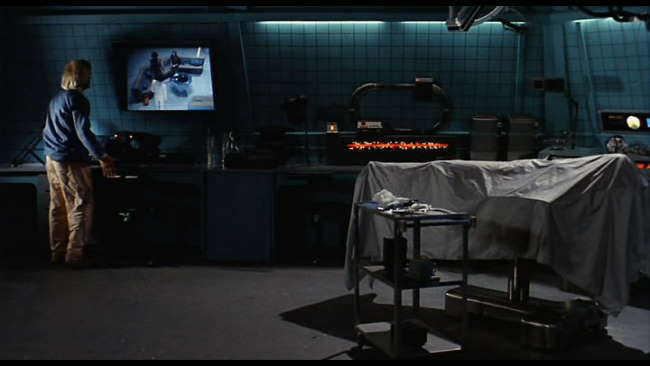
The Story: Android takes place on a large but deserted research-oriented space station located in deep space. Dr. Daniel (played wonderfully by Klaus Kinski), a genius by unstable scientist has almost completed his greatest creation – a perfect female android, named Cassandra. Apparently, Androids have been outlawed on Earth, due to some catastrophic event that occurred previously (hence, the reason for the deep space station), so Dr. Daniel must continue his work under cover with only minimal assistance. His current assistant, Max 404 (Don Keith Opper – also the writer) is also an android, but he is but a prototype – an imperfect experiment may no longer be necessary to continue. Unfortunately, Dr. Daniel needs a living female to “give Cassandra life” by transferring some of her essence to Cassandra.
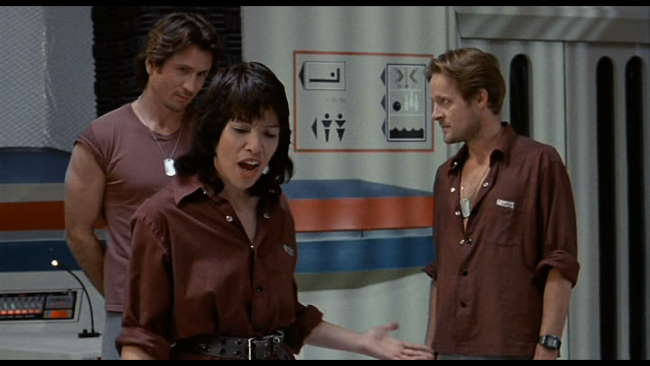
Providence strikes when an outlaw group of criminals on a run-away space ship ends up in their quadrant with a ship in need of repair. As they dock, the criminals, two men and a woman, happily greet Dr. Daniel and Max, and begin looking for what’s valuable to steal, while Dr. Daniels sees this as his golden opportunity to get a woman to finalize his android. Max 404 is immediately attracted to Maggie (Brie Howard), the female convict. At the prompting of the other convicts, Maggie humors Max 404 in order to find out more information. Things come to a head when Max 404 overhears Dr. Daniel say that Max will be deactivated when Cassandra comes online. Max decides his only chance for life is to leave with the convicts, and decides to take things into his own hands.
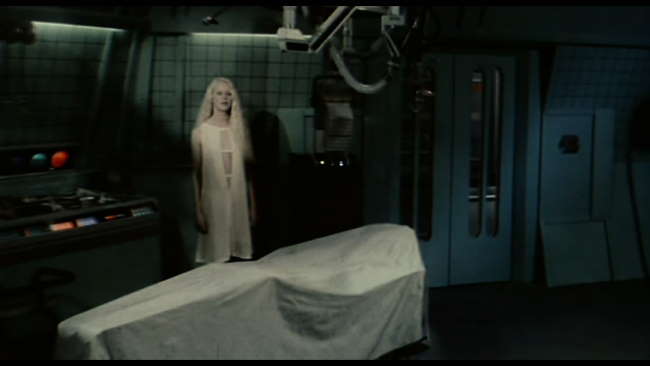
Metropolis’ Maria Recreated: Android employs some fun linkages between previous movies. Max 404 tends to enjoy old B&W, and tends to watch ones that foreshadow coming plot scenes. One of the cool scenes in this movie was when Max 404 is watching the movie Metropolis on the computer monitor. The scene where the evil scientist, C.A. Rotwang is creating an evil android version of Maria from the human Maria. In Android, Dr. Daniel needs to capture Maggie to use her essence to “give life” to the perfect android, Cassandra. The parallels are obvious, and are appreciated to anyone familiar with Metropolis. In another scene, Max 404 is watching “It’s a Wonderful Life” where Stewart finally gets up the urge to go see Mary at her house – this occurs right before Max 404 has his love scene with Maggie.
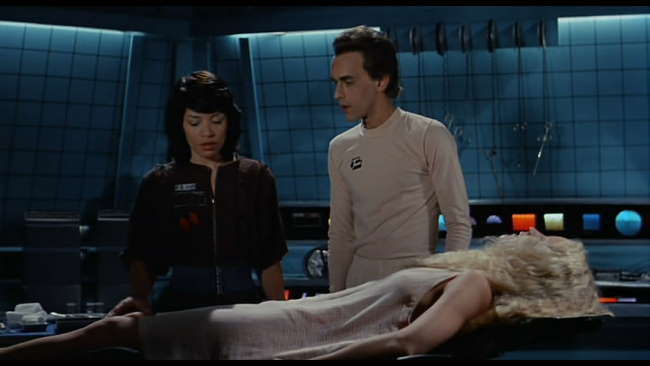
Android Coming of Age Story: One of the really interesting things about Android is Max 404, only 5 years old, engaging in a coming of age type story. Max has the ability to think and feel, but has never experienced anything outside the boundaries of the space station. He spends his time dreaming of Earth, playing video games, and imaging himself engaging in interesting life experiences. He’s not human, but unfortunately for Max, this is the only model he has in determining how to act and react to new situations. Maggie provides him his first opportunity to “engage” in a way that he’s always wished. As soon has things come to a head, Max’s choices are markedly different than a human might be. Max doesn’t feel guilt, nor does he worry about human taboos such as murder, etc. But the highlight of the movie is Don Keith Opper’s acting when he thinks Dr. Daniel (Kinski) is going to deactivate him – this alone is almost worth watching the movie for.
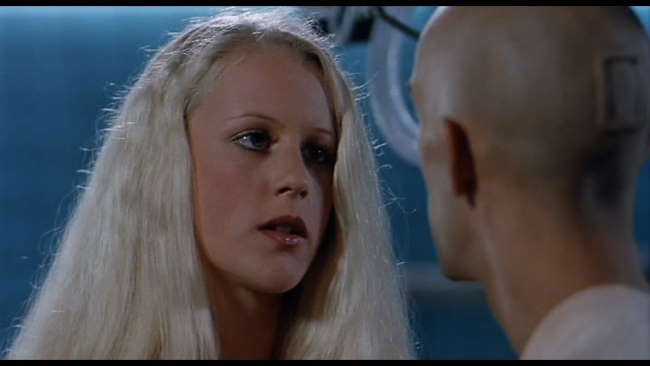
Notice the control panel on the back of Max 404’s head.
The FX: The FX in Android is extremely low-budget. In listening to the commentary, we find out that the story was written as a way to gain additional monetary benefit out of an existing space station set. Android never veers into Dr. Who FX territory, but there are a number of cheesy looking elements that do detract somewhat from the mood. The ships that come to dock have a decidedly Saturday morning kids show look, and the guest suites look very 70s with the off-color strips going around the wall. Still, for the most part things generally work.
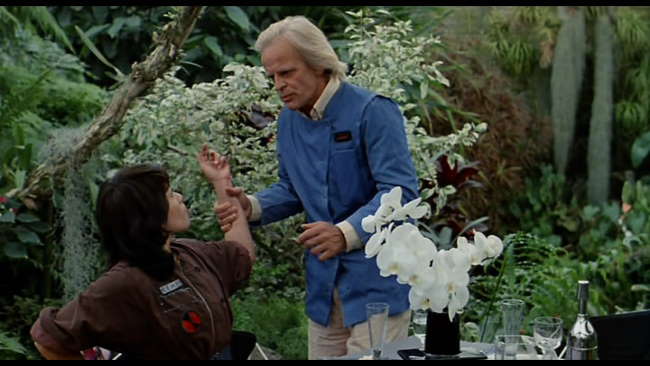
The Bottom Line: Android is one of the really well made low-budget Sci-Fi movies of the 80s. The FX aren’t great, (except for one cool scene that’s a spoiler – DON’T CLICK on this unless you’ve seen the movie - spoiler “decent FX” shot), but the story more than makes up for it. Android gives us a pretty interesting view of a young, imperfect android, engaging in the “coming of age” story, and dealing with challenges far different than perhaps a human might. The ending is also interesting, when Cassandra finally awakes – she too acts differently than expected. In short, Android is a very well written, well acted, and interesting low-budget Android flick.
~See movies similar to this one~
Movie Review By: Metatron
Year: 1979
Directed by: Ridley Scott
Written by: Dan O’Bannon & Ronald Shusett
IMDB Reference
Degree of Cyberpunk Visuals: Very High
Correlation to Cyberpunk Themes: Medium
Key Cast Members:
Ripley: Sigourney Weaver
Dallas: Tom Skerrit
Ash: Ian Holm
Kane: John Hurt
Lambert: Veronica Cartwright
Parker: Yaphet Kotto
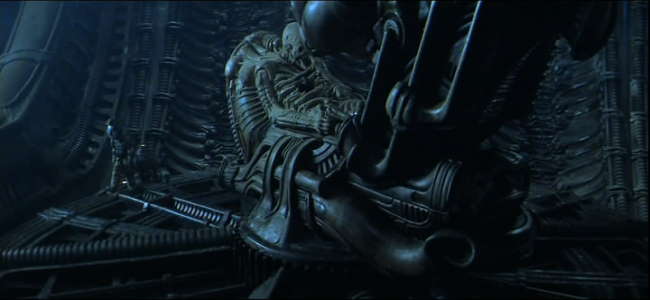
“WHAT’S THE STORY, MOTHER?” Back in 1979, something happened. A momentous event took place, one that would redefine things for years to come, its effects still lingering after all those years. Yet it is neither the none-too-peaceful Soviet meddling in Afghanistan nor the defiant revolt of Iran’s ayatollahs I’m referring to. Something else. A dark vision, a glimpse into the distant void of space. Where no one can hear you scream.
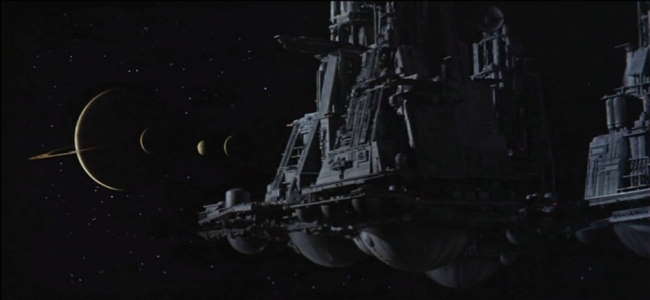
Sure no one could hear ME scream, as it would still be a couple of years before that other great moment in history- the birth of yours truly- but many others sure did when they first saw Ridley Scott’s masterpiece in all its big-screen glory. Must have been one hell of a ride. Another thing I’ve missed then… When I got acquainted with the said macabre flick, it was on a puny twenty-something inch screen and after having seen a multitude of more technologically advanced films. Nevermind. It still blew me away with the force of a 20-megaton nuclear charge. It was something new. An awakening, almost. Don’t ask me how life looked like before Alien. I can’t remember.
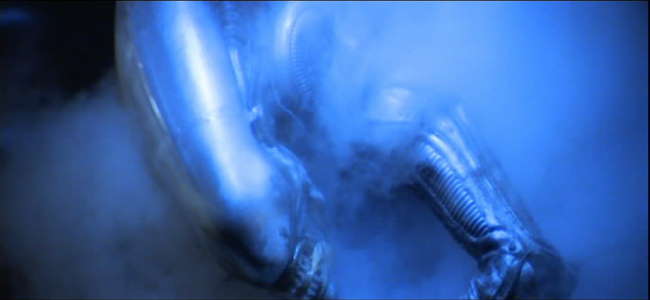
NOT OUR SYSTEM: Okay, so far so good, but there is just one tiny thing. Alien, as the name suggests, is about extraterrestial life. Not of the kind that whooshes past in gaudy flying saucers and abducts cheerleaders, but still very much not of this world. If you think cyberpunk, you obviously think implants, h4×0ring, electric sheep, that sort of thing. Surely a film about a black insect-like monstrosity eviscerating a bunch of interstellar cargo haulers does not fit in here? Well, at the risk of being summarily executed for heresy, I’ll say: yes it does. And, before you get that burning stake ready, I’ll tell you why…
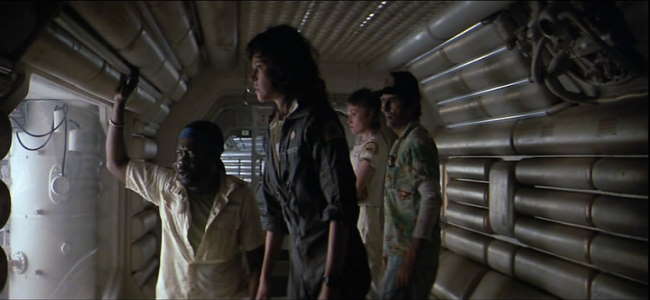
CREW EXPENDABLE: Distant future. USCSS Nostromo, a commercial spacecraft with a gargantuan ore-processing refinery in tow, its 7-man crew in deep hypersleep, encounters an unchartered backyard world from which a mysterious distress signal emanates. Mother, the ships’ computer mainframe, awakens the dreamers- Colonel Ellen T. Ripley among them- to investigate the cryptic transmission, as it is unlikely that its source is anything known to mankind… After landing on the planet’s precambrian surface, the crew discovers a derelict spacecraft… hey, you presumably know all that already anyway! Besides, for those lucky few who are still to live through the cathartic shock that is Alien, I shall try to keep spoilers to a bare minimum. Suffice it to say that they pick SOMETHING up on their unscheduled trip- and this something is just about as friendly to other organic life as H5N1 virus. Only slightly bigger. Needless to say, Colonel Ripley certainly won’t have any good memories from this particular flight…
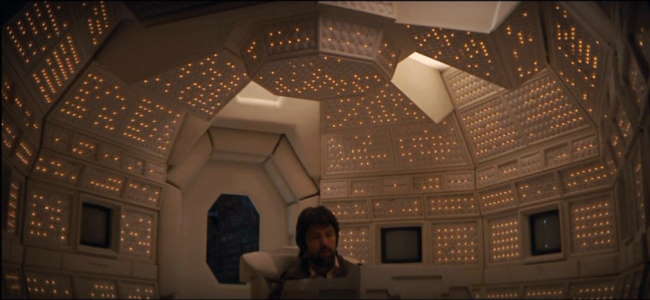
DOES NOT COMPUTE: Now the heretical part. I, regardless of how controversial a view that is, will argue that the original Alien is- you ready for this?- a cyberpunk film. True, it is not PURE cyberpunk in the way the Matrix or Ghost in the Shell are. But then again the vast majority of films reviewed here require some argument as to their cyberpunk credentials. A film does need to have ALL the relevant cyber themes either. Blade Runner and Terminator have no cyberspace, the Matrix has no androids and so forth. Same goes for the visual side. Admittedly, Alien is an uncommon hybrid, a fusion between horror and dark, cyberpunk sci-fi. But this only makes things more interesting.
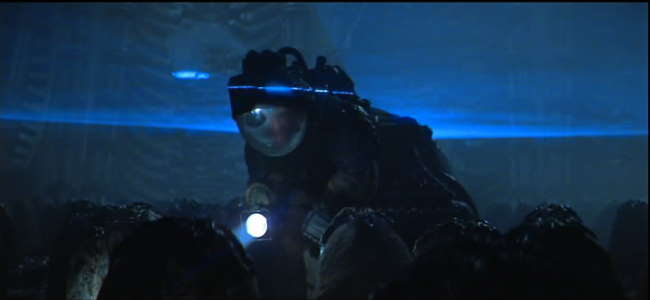
For a start, one needs to mention the existence of a shadowy entity that lurks in the background of the events in Alien (and two of its sequels)- Weyland-Yutani, a dark corporate monolith whose invisible, intangible hand guides many of the events that take place on the Nostromo and beyond. Admittedly, corporate control here is not organized in an oppressive, Orwellian kind of way. Few however would argue that its ruthless actions, removed from any ethical constraints, are any less disturbing. This fictional conglomerate is in fact not far removed from some modern-day corporations that cast aside moral and legal limitations to get what they want. Illegal deals, corruption at the highest level, worker exploitation, illegal drug trials, cover-ups- been watching the news anytime lately? Weyland-Yutani is merely the next step in evolution- a latter-day Wal-Mart, some may say. Not only willing to sacrifice Nostromo’s crew members, it is also quite fine with having its dirty work overseen by a cynical and efficient android, whose cybernetic identity only becomes apparent when a few parts come off…
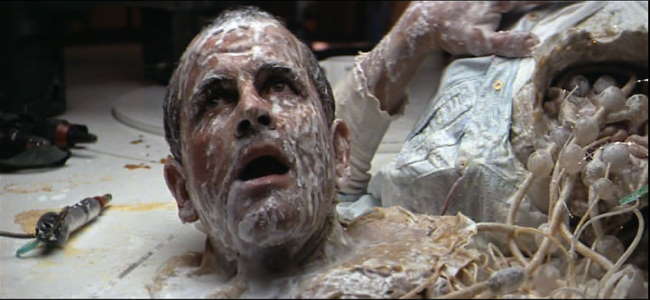
“A GODDAMN ROBOT!”: The inclusion of androids in the Alien series is another overarching cyberpunk theme. The first film does not explore the deeper implications of artificial life as much as the sequels do, but it’s still there. Here, the “artificial person” functions mostly as an extension of Weyland-Yutani’s almost limitless influence, a secretive overseer of affairs who closely follows implanted orders. But the subsequent films will explore this theme further. Rather than merely performing more identity tricks, androids take on a distinct societal role. One might quite correctly remember Bishop and Call, the other synthetics in the series, for their outstandingly vivid humanity, contradicted only by the milky white of their ersatz blood. Yet for all their moral qualities these sentient beings are condemned to an inferior- almost slave-like- role in society. And yet- for now- they accept that role with resignation, tolerating their place in the scheme of things. A programmed limitation? Hardly likely. Given their immensely strong self-awareness, one may imagine how challenging and unfair is it for an entity so humane to accept being treated as nothing more than a piece of property- so much so that Call in Alien Resurrection will at one point voice her defiance and disgust against what she was made to be. By way of comparison, in the first Terminator film the most sophisticated words uttered by our favourite mechanoid executioner are “fuck you, asshole”. See the difference?
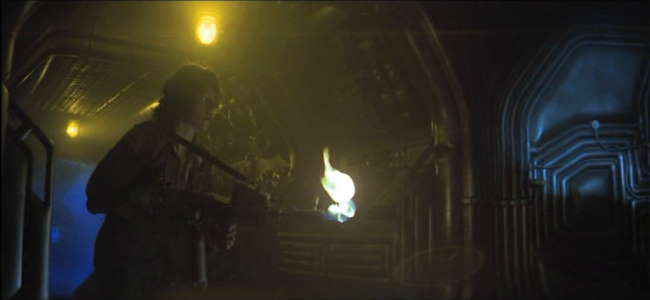
NO FURTHER ENHANCEMENT: The next important bit -the visuals. Powerful, provocative, and atmospheric, they exhibit the studied, gritty realism that has become the calling card of the series. In stark contrast to idealistic visions of the future often seen in other sci-fi films, Alien has gone down a totally different route, one that would later come do be associated with the cyberpunk genre. Case in point- the Nostromo, a far cry from sleek interstellar vessels of old. As it majestically looms into view at the beginning of the film, a mechanical cathedral emerging from the pitch black void, one can see that the film follows an entirely different canon of aesthetics. The ship is monumental, imposing through its sheer mass, intentionally unpretty. Similar approach carries on within, as we explore the craft’s unwelcoming, functional interior of labyrinthine complexity, its dimly lit, grimy corridors filled with snaking wires and exposed machinery. The crew quarters, while cleaner and more organized, seem no less depressing, exhibiting a cold, clinical look reminiscent of vintage computers. Every now and then, the screens will light up with sharply rendered readouts as the mainframes reawaken with eerie electronic chatter. As there was no CGI to fall back against, the only way to create the Nostromo’s vivid interiors was to painstakingly construct the whole set, which gives it a spectacularly tangible quality seldom seen nowadays. And one can almost feel the filmmakers pride, as the camera moves, unhurried, through these cold, industrial catacombs, studying the complex surfaces, celebrating their utilitarian crudity. Along with Blade Runner, this film has defined the core cyberpunk visual reference point for years to come.
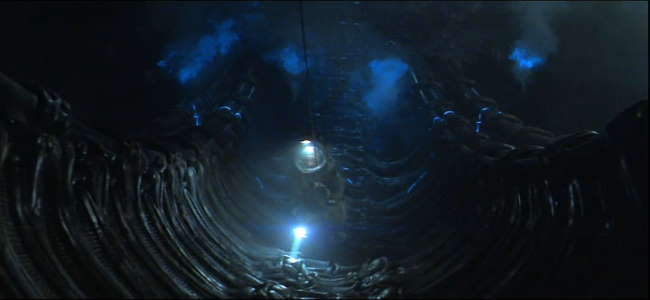
The Nostromo, however, does feel rather cozy next to the primordial desert in which it landed, a dark moonscape filled with surreal forms of bare rock. And it appears positively Arcadian compared to the infamous derelict ship, a bizarre structure, part mechanical, part organic, an otherworldly nightmare. Welcome to the dreamworld of H.R. Giger…
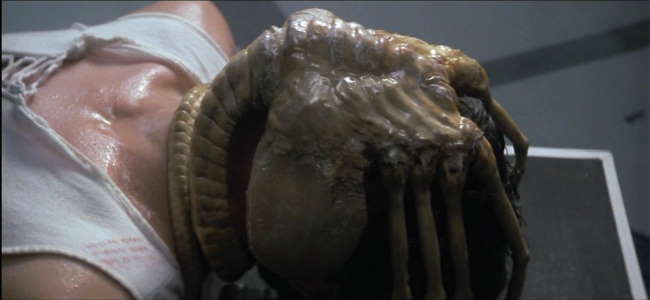
PERFECT ORGANISM: Often imitated and never bettered, Giger is a master of the grotesque. It is his wonderfully twisted mind that has spawned what is probably the greatest creature designs ever. Yet the Xenomorph is only one of Giger’s many dark, disturbing visions- many of which have caused outbreaks of controversy due to their blatant, twisted eroticism. Indeed, much of the Alien’s looks and life cycle can be seen as a perverse sexual metaphor. Yet Giger’s art is first and foremost a study of a peculiar symbiosis between man and machine, an often perverse fusion of the robotic and the organic. Next to his biomechanical mutations, most depiction of cyborg flesh appear staid and conservative. Some theories about the Xenomorph itself in fact suggest that its obscene, insectoid form was not a result of evolution, but deliberate design, the entire species intended for use as the ultimate bioweapon by a mysterious extraterrestrial race to which the forsaken spacecraft belonged. In that respect, it seems to blur the line between biological and artificial life, being something of an organic killing machine. And, it has to be added, a pretty effective one at that.
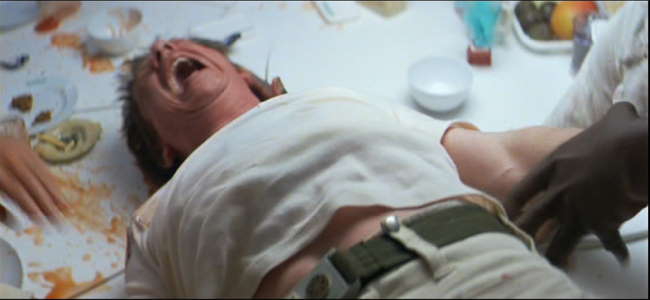
HEAR THEM SCREAM: The sound effects complete the package. From the moody, unmistakable musical score by Jerry Goldsmith to the sonic assault that we are treated to in the final sequences, as self-destruct alerts moan mournfully and explosions fill the air, this is a true masterpiece. The sound effects also have definite cyberpunk traits- the strange bleeps and machine chatter generated by the ship’s electronics are one of the best I’ve ever heard. And the Alien shrieks are almost music to my ears…
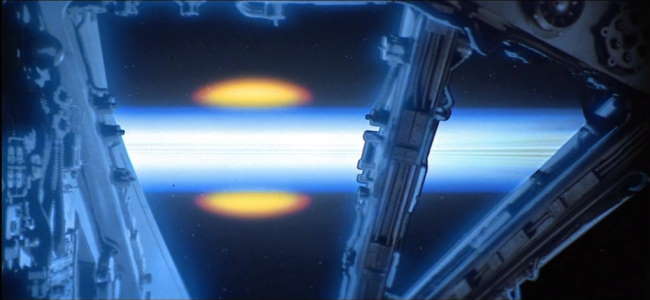
SIGNING OFF: Ripley’s confrontation with the Alien would not, of course, be the last. Three sequels have followed, each surprisingly managing to explore new themes, many of which have strong relations to the cyberpunk movement as well. Rumours of a fifth installment still linger, even though the outstanding flop that is AVP has cooled some of the enthusiasm down, and Weaver, whose evolution from a scared little girl into a seasoned Xenomorph slayer was one of the major aspects of the film, has denied involvement. We shall see. Whatever its future may be, the Alien franchise has often been seen as sitting uneasily among the more obvious cyberpunk films. Being a hybrid, it was bound be frowned upon by the purists. Yet the mere fact that it involved some non-cyber themes made many ignore the fact that it had loads of thematic links to the genre, plus its visual side is arguably closer to the orthodox cyberpunk ideal than Equilibrium, Casshern and Dark City taken together. And that it was made by the very same man who brought us a certain film involving runaway replicants. In fact the series came painfully close to gaining a sort of blessing from William Gibson himself, who has produced the original script for the third Alien film- one that, for some bizarre reason, got rejected. If it succeeded, the perception of the franchise in terms of its cyberpunk credibility might have been very different indeed.
And now if you excuse me, I’m off for a heresy trial…
More Alien Screencaps on Page 2–>>
~See movies similar to this one~
Movie Review By: SFAM
Year: 2004
Directed by: Alex Proyas
Written by: Jeff Vintar & Akiva Goldsman, based on book by Isaac Asimov
IMDB Reference
Degree of Cyberpunk Visuals: High
Correlation to Cyberpunk Themes: High
Key Cast Members:
Sonny: Alan Tudyk
Del Spooner: Will Smith
Susan Calvin: Bridget Moynahan
Dr. Alfred Lanning: James Cromwell
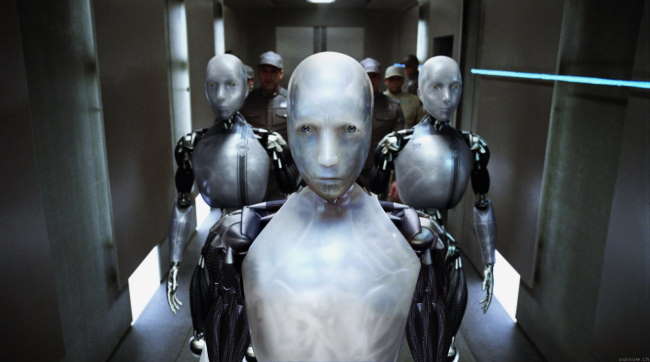
The Three Laws of Robotics
1. A robot may not injure a human being, or, through inaction, allow a human being to come to harm.
2. A robot must obey orders given it by human beings, except where such orders would conflict with the First Law.
3. A robot must protect its own existence as long as such protection does not conflict with the First or Second Law.
Overview: Superficially based on Asimov’s great collection of short stories - “I, Robot” – this movie of the same name usually sacrifices intelligent Sci-Fi for overblown summer blockbuster clichés. While Asimov fans will recognize the names of Dr. Alfred Lanning, Dr. Susan Calvin and Lawrence Robertson, they won’t recognize the characters that Proyas gives us. In yet another, “The evil robots are coming to control us” movie. I, Robot delivers eye-popping, often well over-the-top FX from beginning to end. Right at the beginning, I, Robot relays to us that they’ve set the bar low by spending the first five minutes delivering Converse Shoe and Fed-ex Delivery commercials. Still, I, Robot captures enough of the essence to make it enjoyable cyberpunk viewing. Asimov’s three rules are still in play here, and Sonny, the robot, actually makes it interesting.
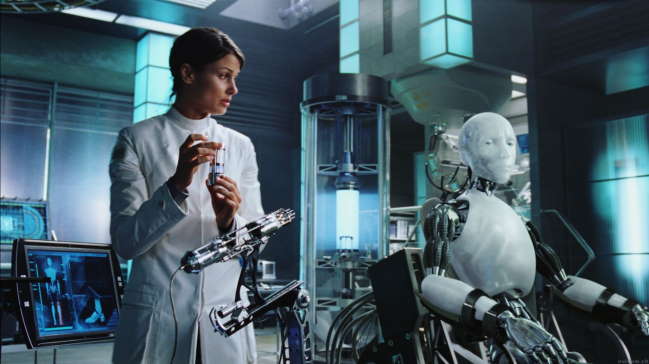
The Story: In the near future (2035), robots are a pervasive fact of life, and serve humans in a variety of capacities. US Robotics, maker of the fabled “NS” series of robots is just about ready to release their greatest innovation, the NS5 robots. NS5 robots are the most lifelike to date, and are destined to replace the ultra-reliable but outmoded NS4 model. The NS5s are guaranteed to stay new by receiving daily updates from US Robotics’s master AI system, “V.I.K.I.”
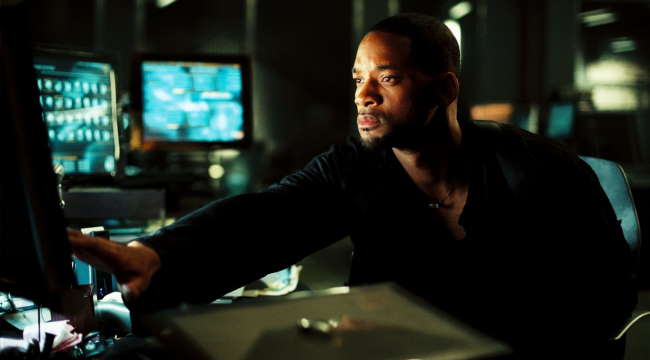
The week of the release, Dr. Alfred Lanning (James Cromwell), the founder of modern robotics dies in an apparent suicide. He leaves a clue behind for former patient and police officer Del Spooner (Will Smith). Del Spooner has reasons to hate and mistrust robots and immediately suspects foul play. US Robitics CEO Lawrence Robinson (Bruce Greenwood) is suspicious looking, and things just “feel” right.
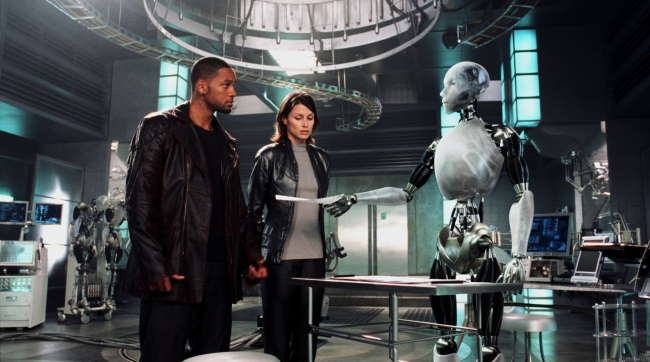
Assisted by robot psychologist, Dr. Susan Calvin (Bridget Moyanahan), Del finds an NS5 robot named Sonny, who appears to have freewill developed life-like features – so much that Del suspects Sonny of having killed Dr. Lanning. In following the breadcrumbs, Dels fears are realized – the robots do not seem to be adhering to the thee Laws of Robotics. Now they must race to uncover the real nature of the plot before the trap is sprung.
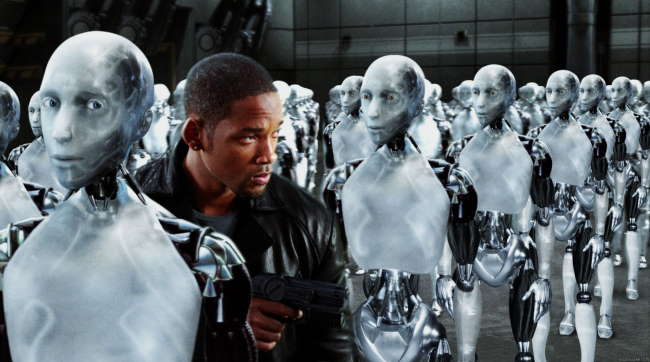
Will Smith Plays “Will Smith”…Again: You know the role – cocky, argumentative, underdog tough-guy cop – Be it MIB, ID4 or I, Robot, Will Smith plays the same old Will Smith. I, Robot was clearly green-lighted to bring in the teens to the seats over the summer – Will Smith is the guy to do this. Will Smith and massively cool FX = ROI. Unfortunately, it also engenders a far crappier story. Had we gotten an introspective no-name person in Smith’s role, we might have had a significantly higher degree of realism. But then again, realism would imply that things like the overblown US Robots Truck bashing scene wouldn’t have been included.
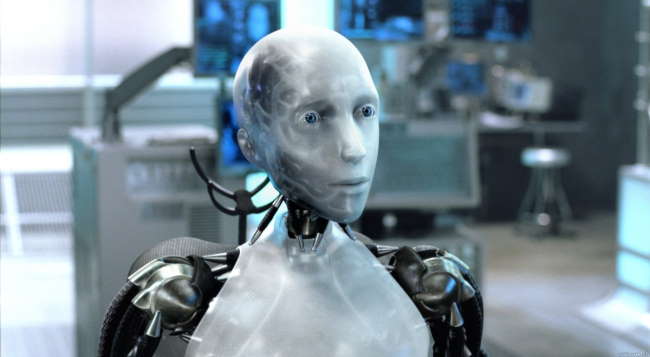
Sonny: If not for Sonny, I, Robot would be almost unwatchable. Sonny (voiced by Serenity star, Alex Tudyk) provides us an investigation into android humanity similar to Star Trek’s Data in his better moments. While some of it comes off as sappy, Sonny’s questioning of his right to exist, and more interestingly, his hopes that others consider him a being instead of an it provide the best moments of the movie. One can only wonder how much better I, Robot would have been if this aspect of the movie was highlighted vice the focus on Will Smith and the overblown FX scenes.
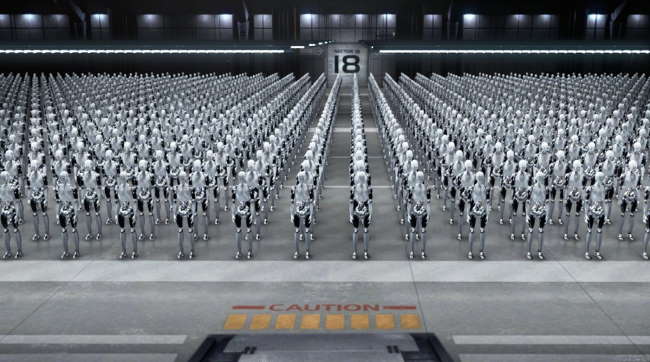
“There have always been ghosts in the machine – random segments of code that have grouped together to form unexpected protocols. Unanticipated, these free radicals engender questions of free will, creativity, and even the nature of what we might call the soul. Why is it that when some robots are left in the dark they will seek the light? Why is it that when robots are stored in an empty space they will group together rather than stand alone? How do we explain this behavior? Random segments of code? Or is it something more? When does a perceptual schematic become consciousness? When does a difference engine become the search for truth? When does a personality simulation become the bitter moat of the soul?”
Evolution of The Three Laws: I, Robot touches on some interesting questions concerning the three laws. If, taken to their logical extreme, do the laws imply, similar to Colossus: The Forbin Project, that machines should consider removing our freewill in order to protect us? Also, given a set of operating conditions that include the ability to learn from the environment, are we truly sure that machines would not eventually develop sentience and freewill? This is especially problematic when science has yet to deliver a definitive statement on how this comes about.
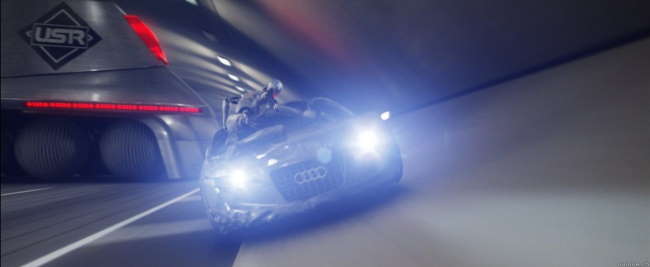
The FX: Yes, I, Robot delivers awesome android FX – continually so, in fact. The mandatory overblown chase scenes, massive explosions and lots of gun fighting are all there, but so are the robots. And the robots are simply amazing. Their facial expressions are lifelike, their exoskeleton muscles look believable, and their demeanor seems perfect. However, their cartoon-like ability to jump as high and far as they like is well past over-the-top. Worse, not all of the NS5s are equal, as near the end they transform into bumbling fools, where an army of them seems unable to stop two humans in possession of guns that never run out of ammo.
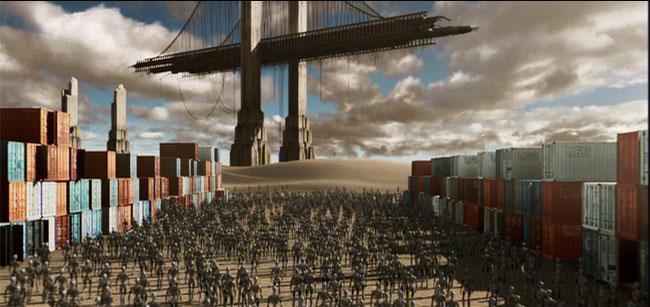
The Bottom Line: One wonders how great I, Robot could have become had the studios given Dark City director Proyas more of a free hand in its development. Instead, I, Robot is a summer blockbuster first, and an interesting cyberpunk movie second. Still, Sonny and the robot FX raises I, Robot to be more interesting and enjoyable than it has rights to be. The performances of the leads are pretty much all lackluster – make no mistake – Sonny is the star here, and dominates the screen during every appearance he makes. Normally I give overblown summer blockbusters with great FX five or six stars – Sonny, and the wonderful ending visual makes I, Robot deserve a bonus star.
~See movies similar to this one~
|

![]() ). In looking at the movie poster and in hearing from others, I just HAD to get a copy of this to watch. Puzzlehead is about as far as you can get from a Hollywood production. You won’t see fast-paced action sequences here (quite the contrary – the movie is very slow paced), nor will you get futuristic scenery, or high-end FX. But make no mistake – even though the cyberpunk visuals are sparse, this is DEFINITELY a cyberpunk movie. The themes introduced and the fractured sense of humanity are fully cyberpunk.
). In looking at the movie poster and in hearing from others, I just HAD to get a copy of this to watch. Puzzlehead is about as far as you can get from a Hollywood production. You won’t see fast-paced action sequences here (quite the contrary – the movie is very slow paced), nor will you get futuristic scenery, or high-end FX. But make no mistake – even though the cyberpunk visuals are sparse, this is DEFINITELY a cyberpunk movie. The themes introduced and the fractured sense of humanity are fully cyberpunk. 




















































































